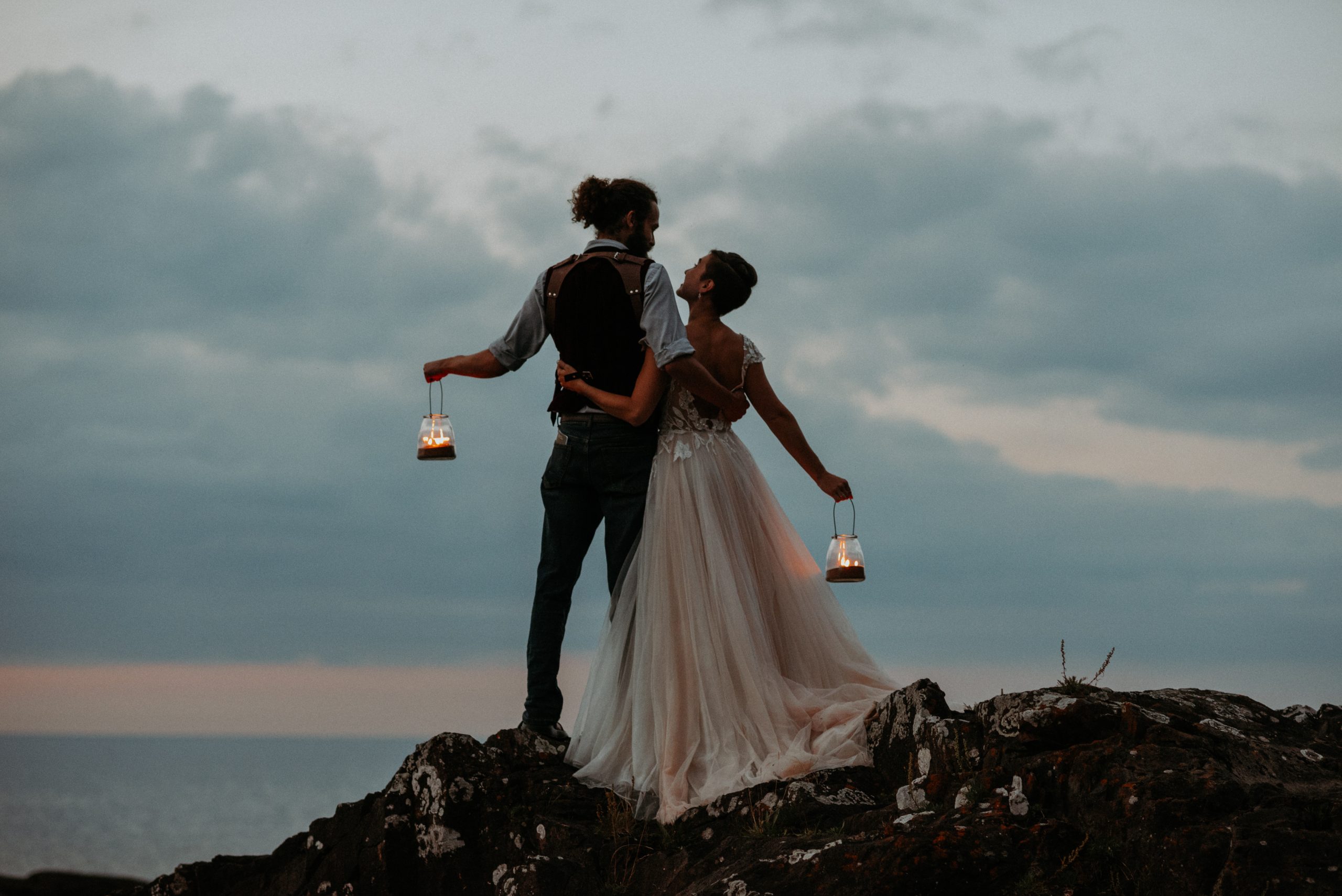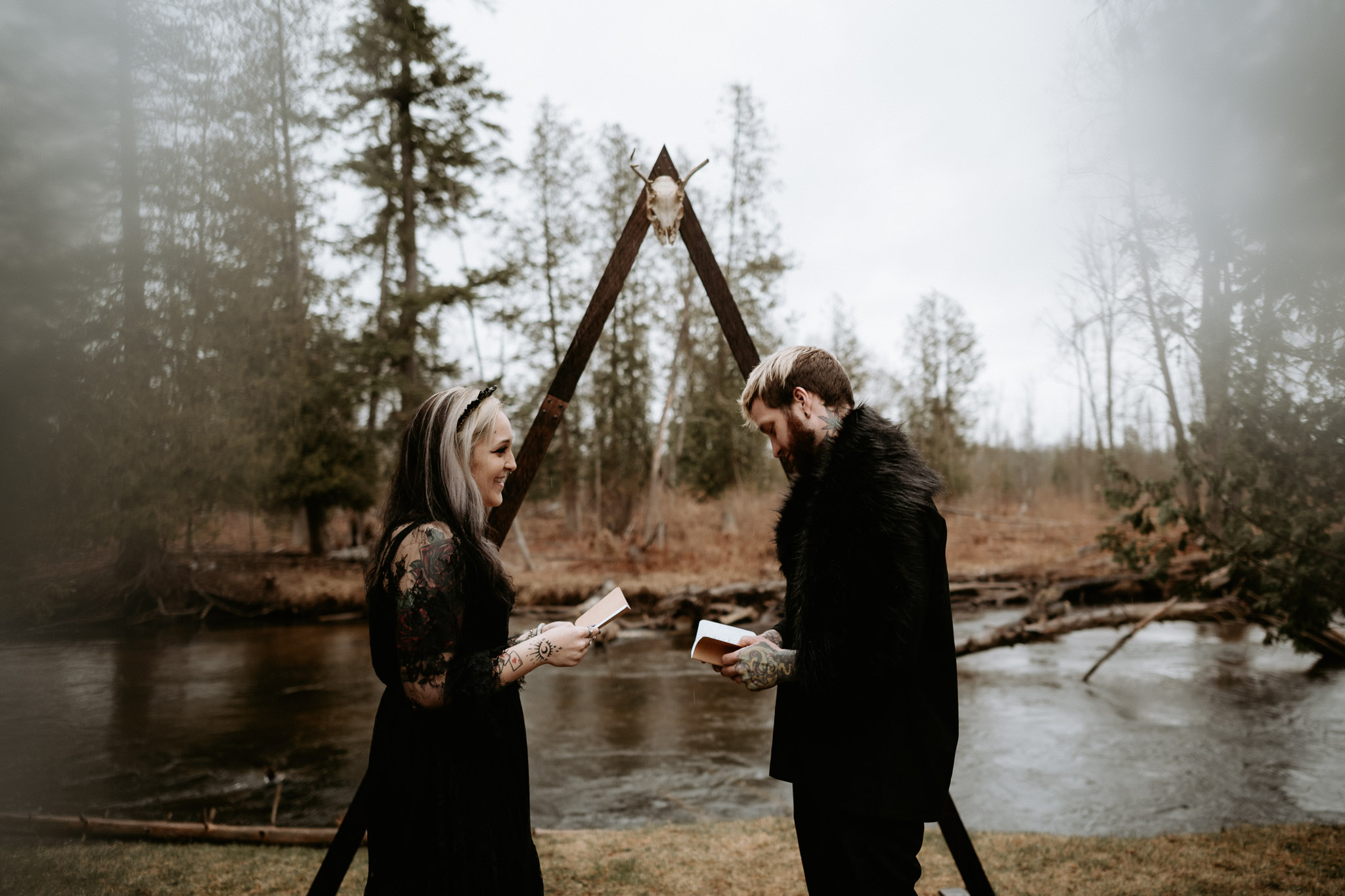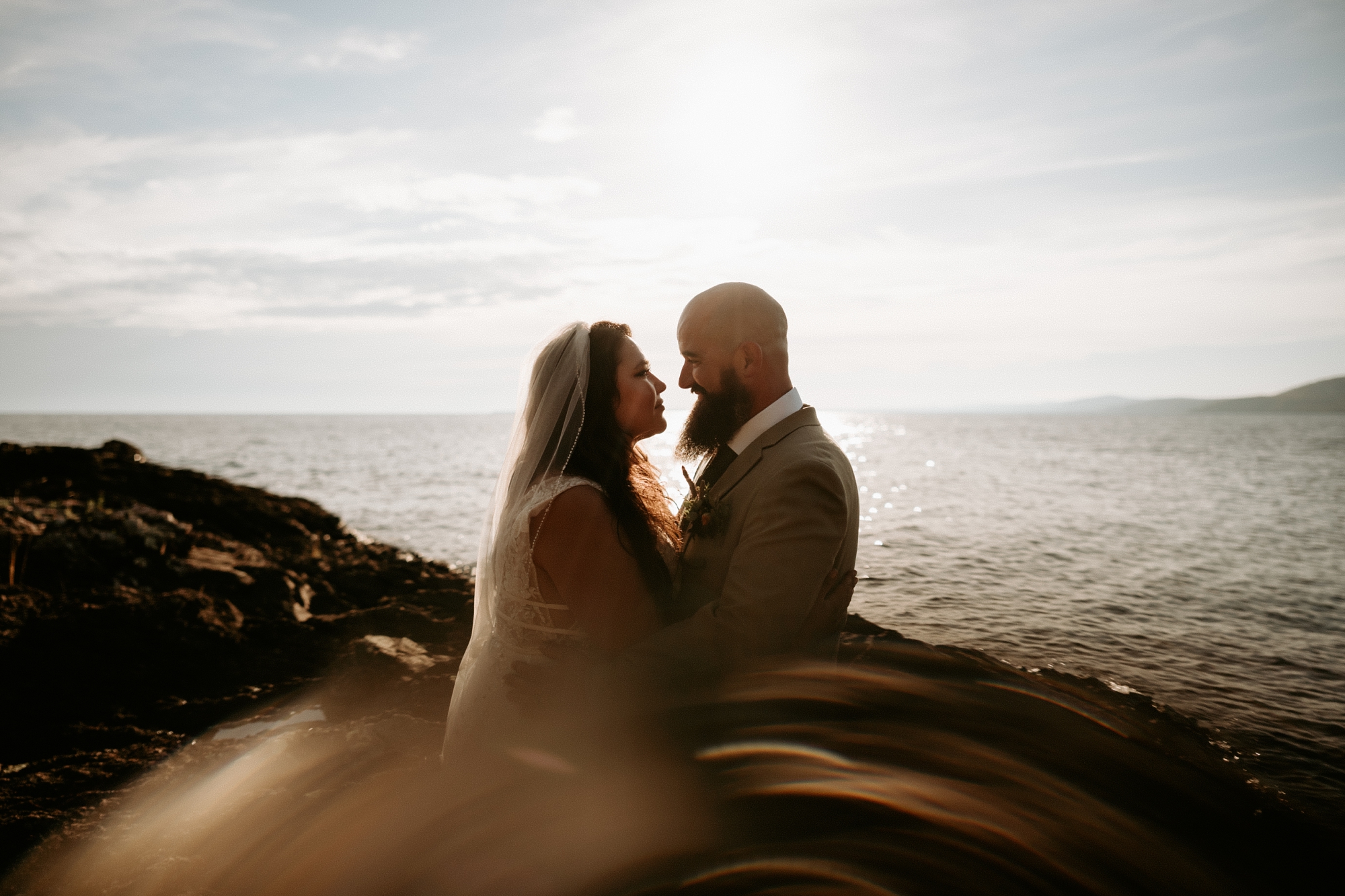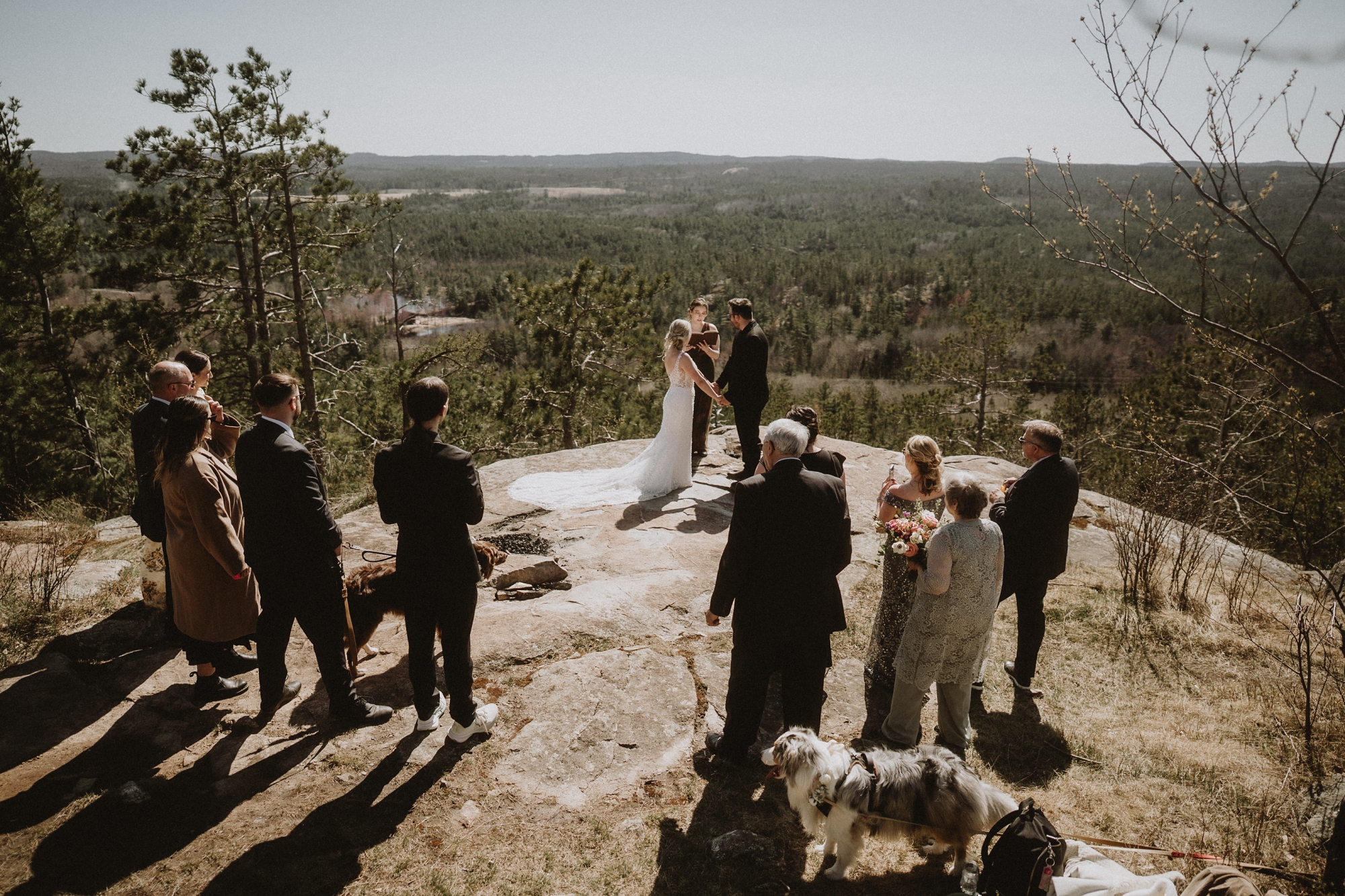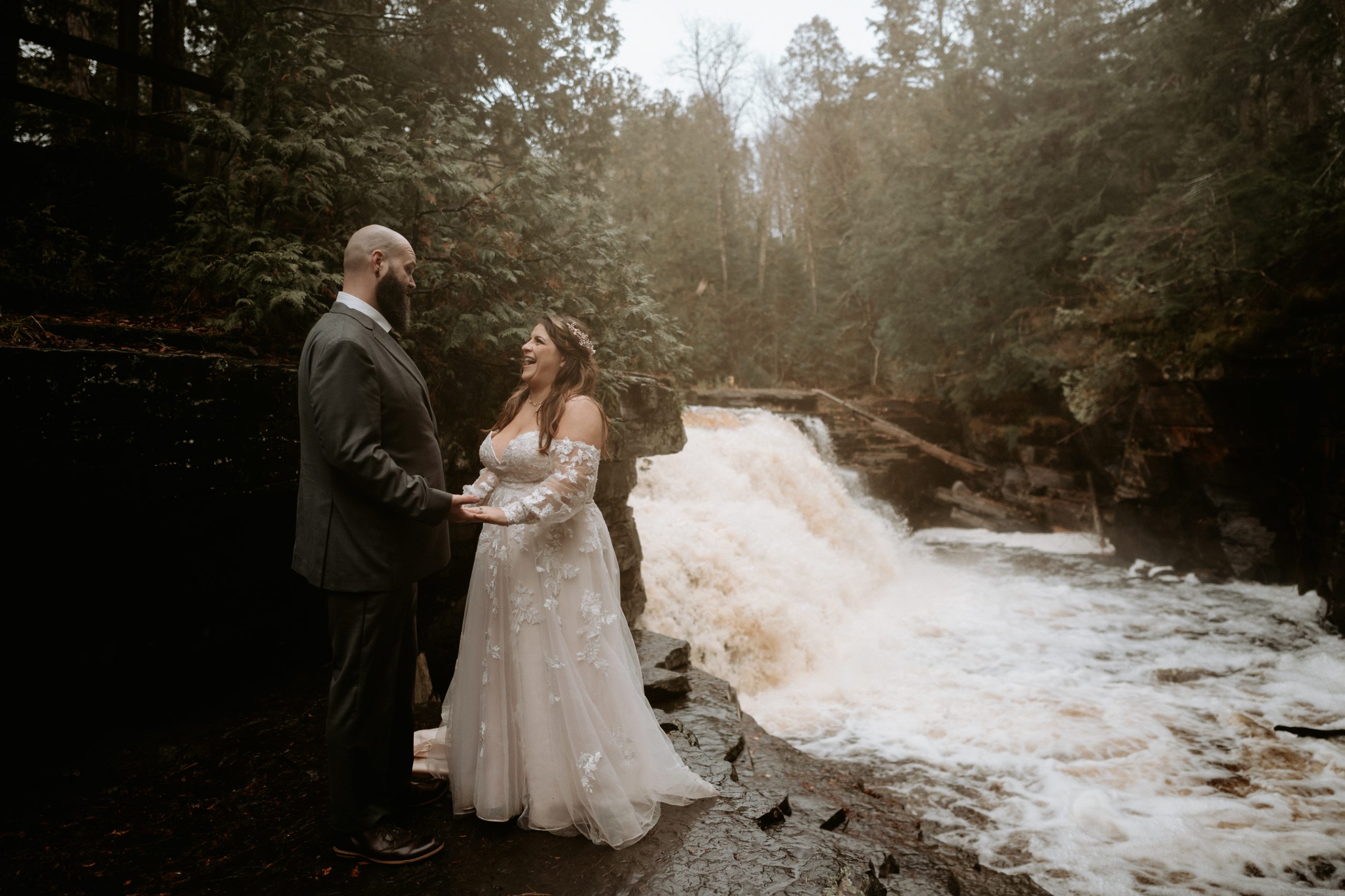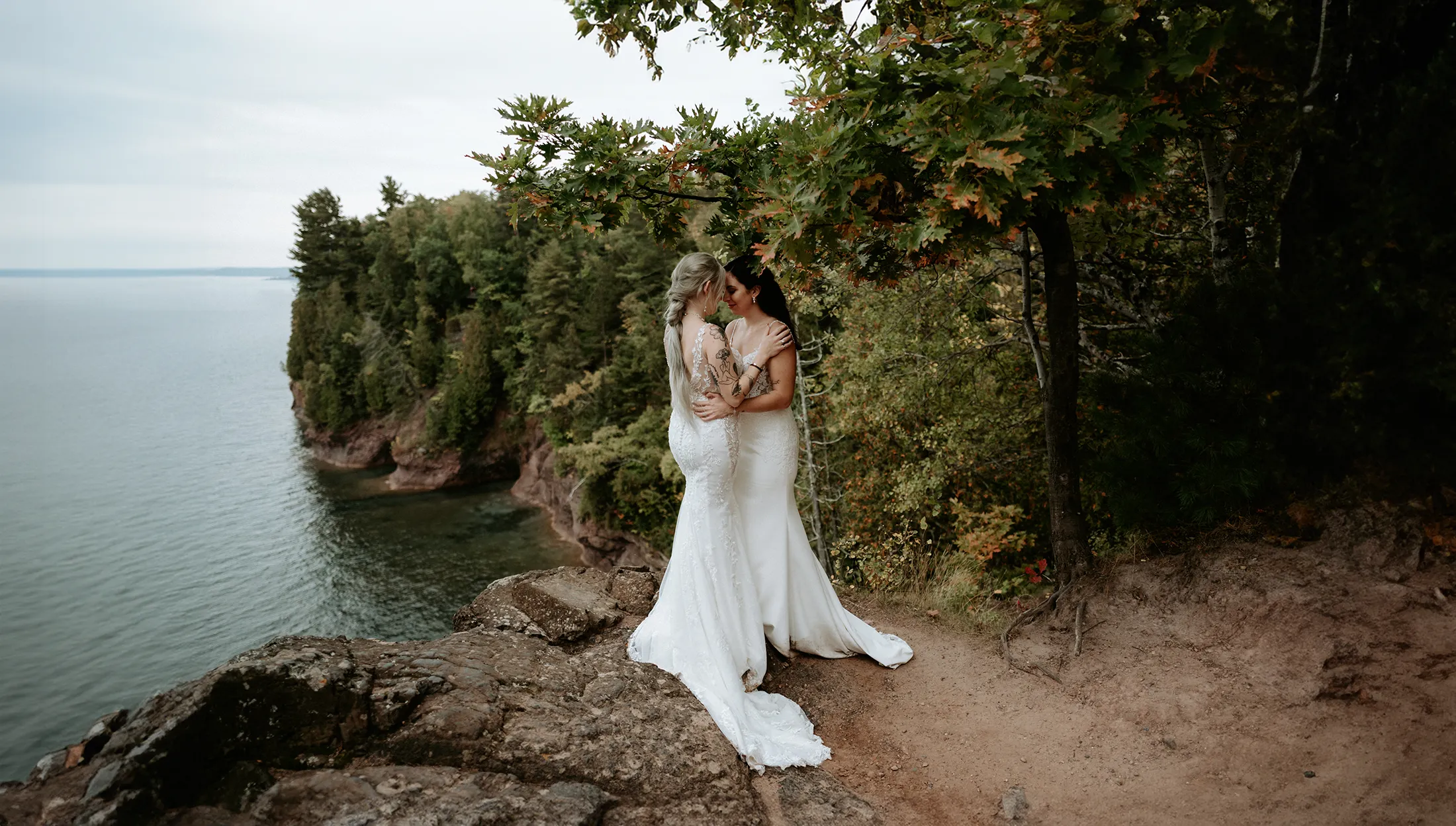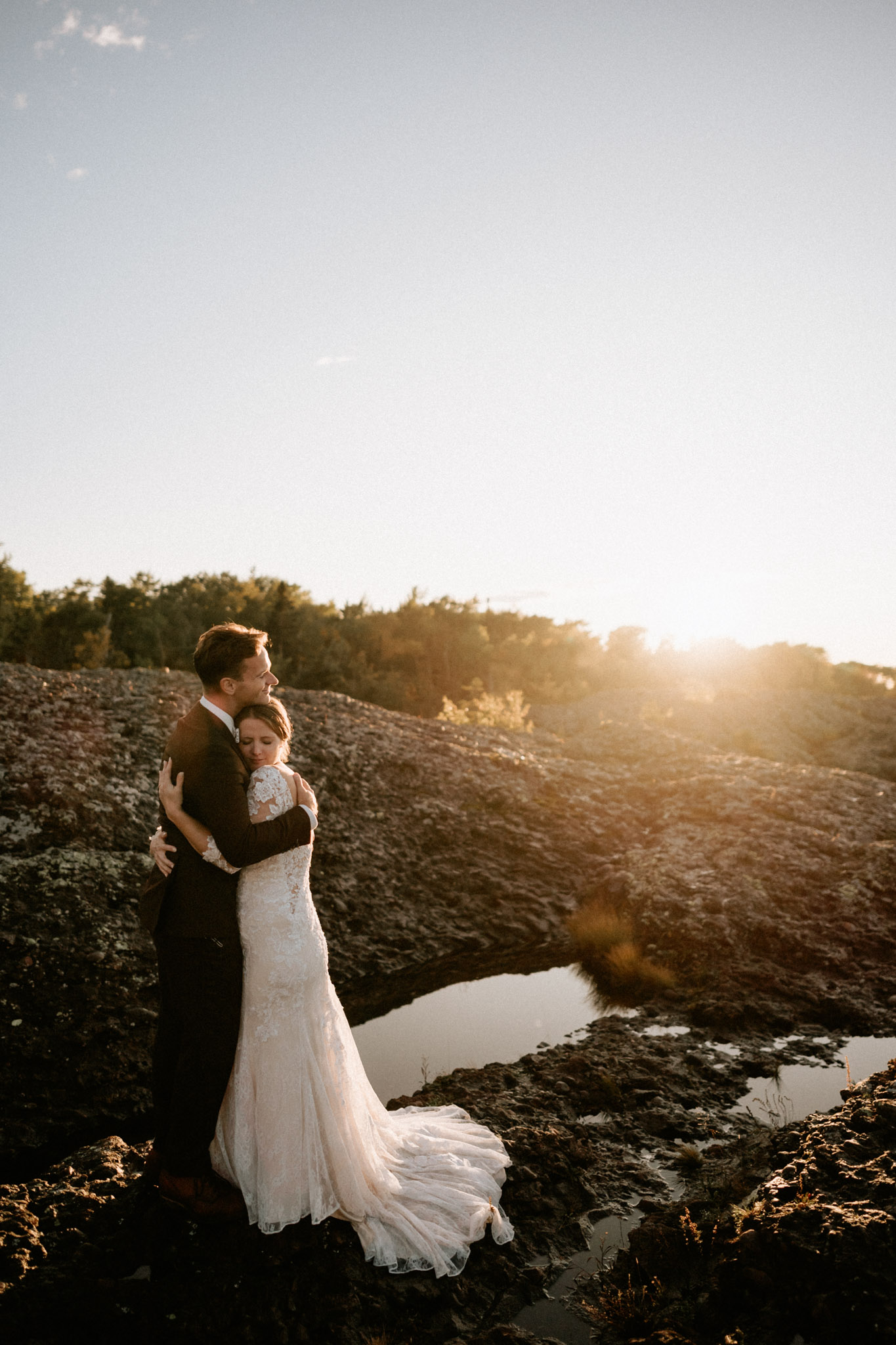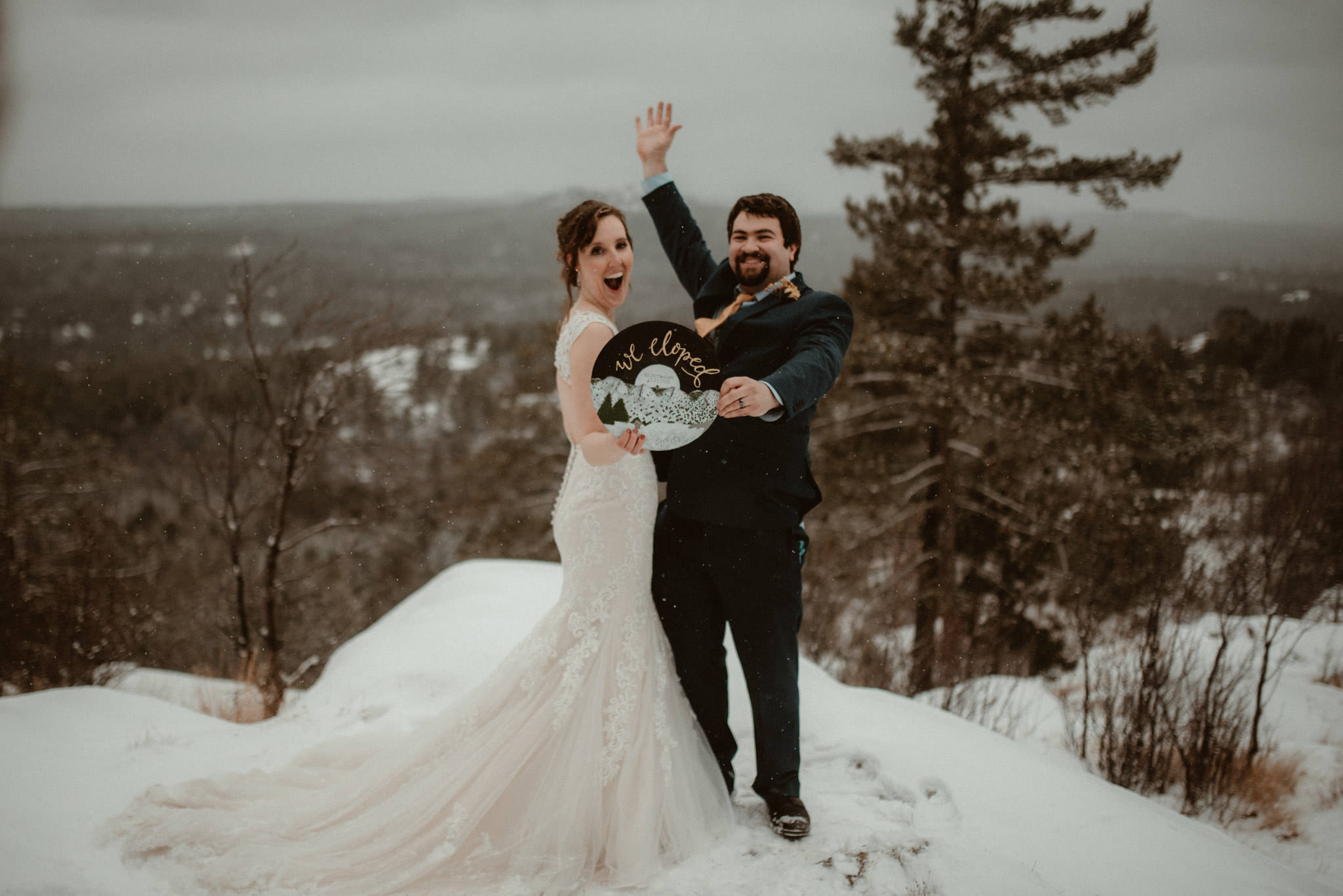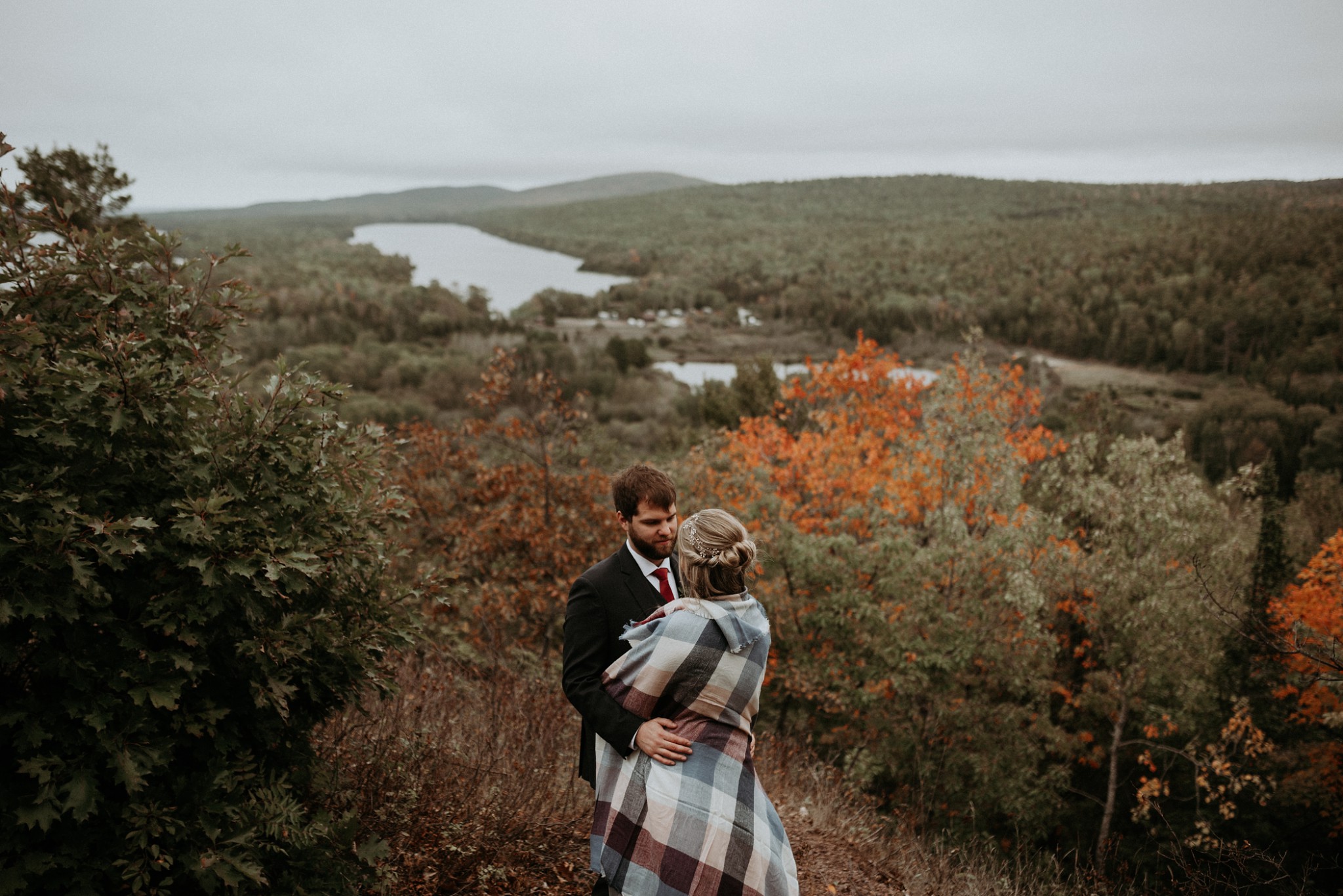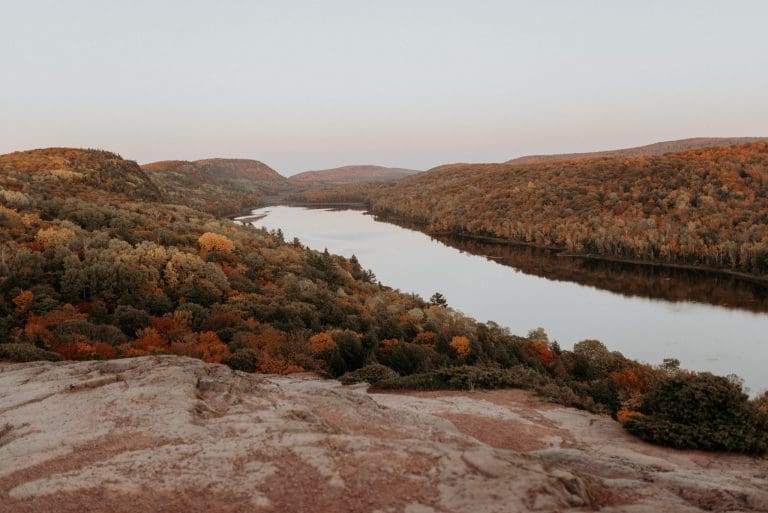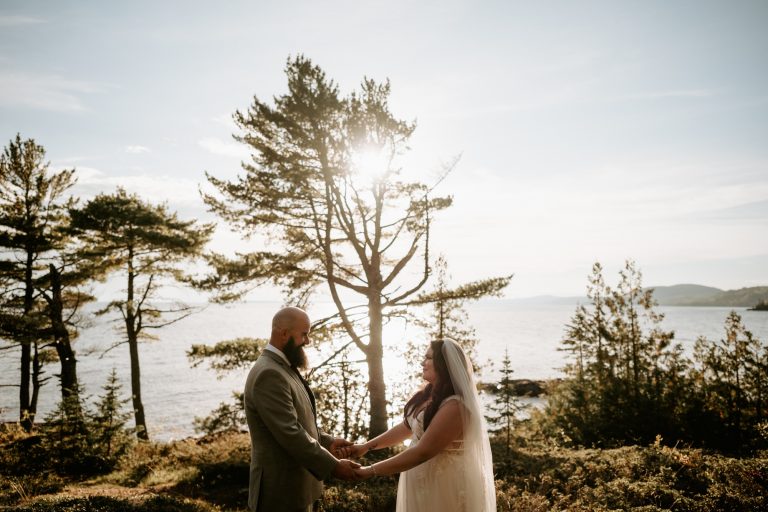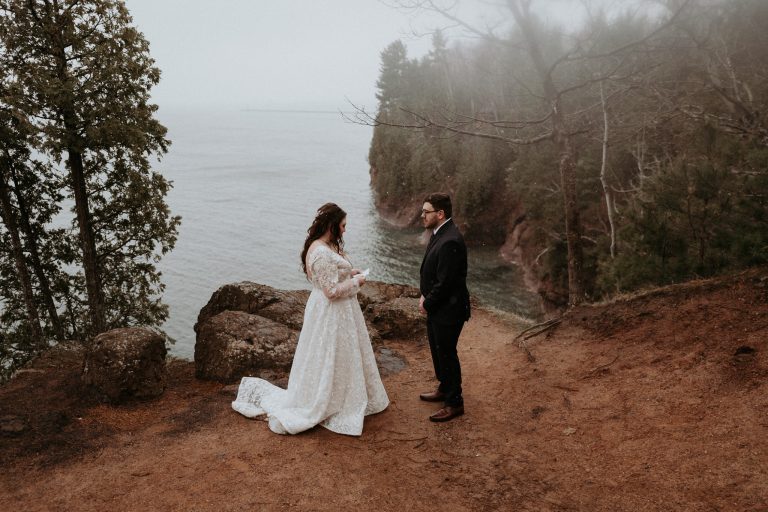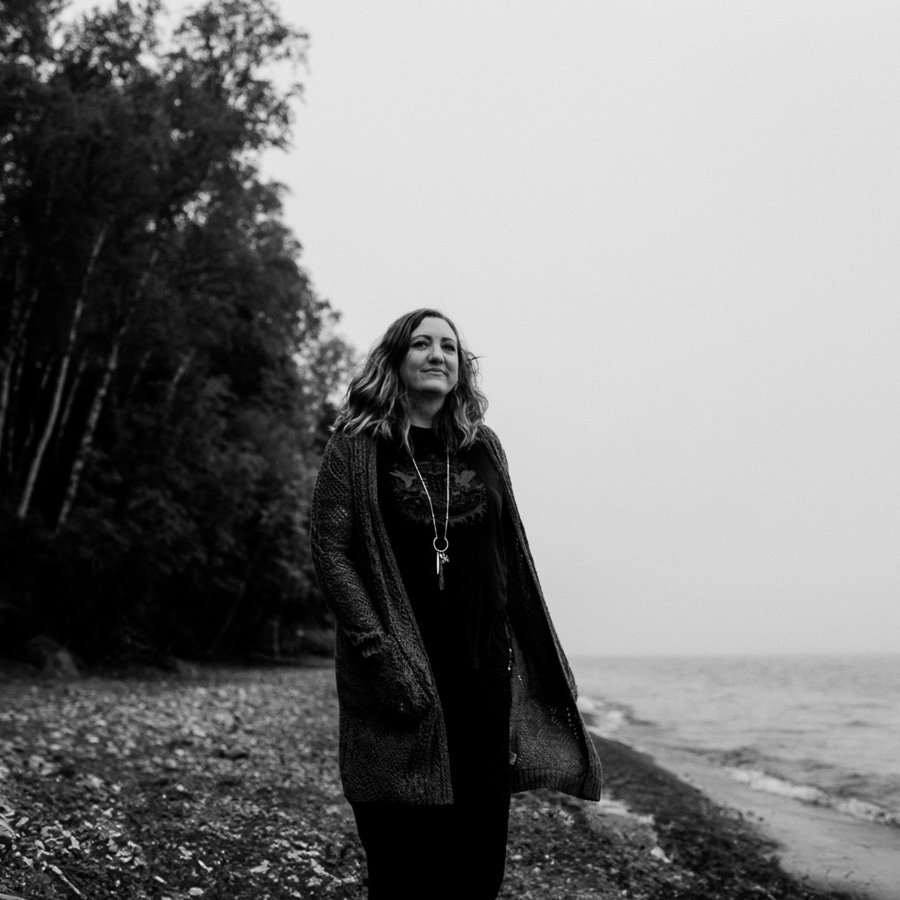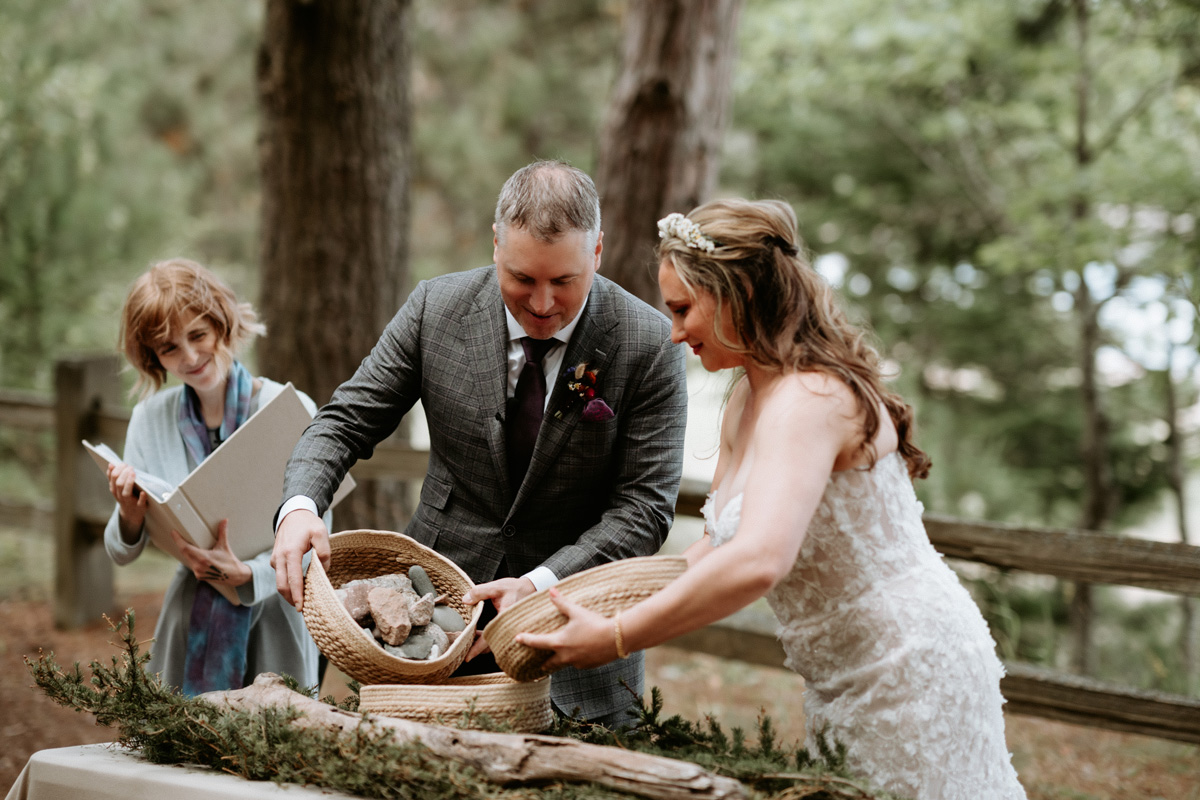How to Elope in Michigan: The Ultimate 2025 Guide, Locations & Tips
Your Michigan Elopement Guide
Legal steps, gorgeous places, real costs, pro tips, and everything in between.
Thinking about eloping in Michigan’s great outdoors? You’re in the right place. Picture yourself standing on the windswept cliffs of Lake Superior, wandering through mossy forest trails, or exchanging vows on a quiet beach under the stars. This guide is here to help you map out every step, from the legal must-knows to the fun little details that make the day yours.
Elopements aren’t about sneaking away in secret anymore. They’re about choosing a day that feels true to who you are. Whether that’s hiking to a hidden waterfall at sunrise or exchanging vows on a quiet beach. It’s a way to get married without the stress, big crowds, or traditions that don’t fit you.
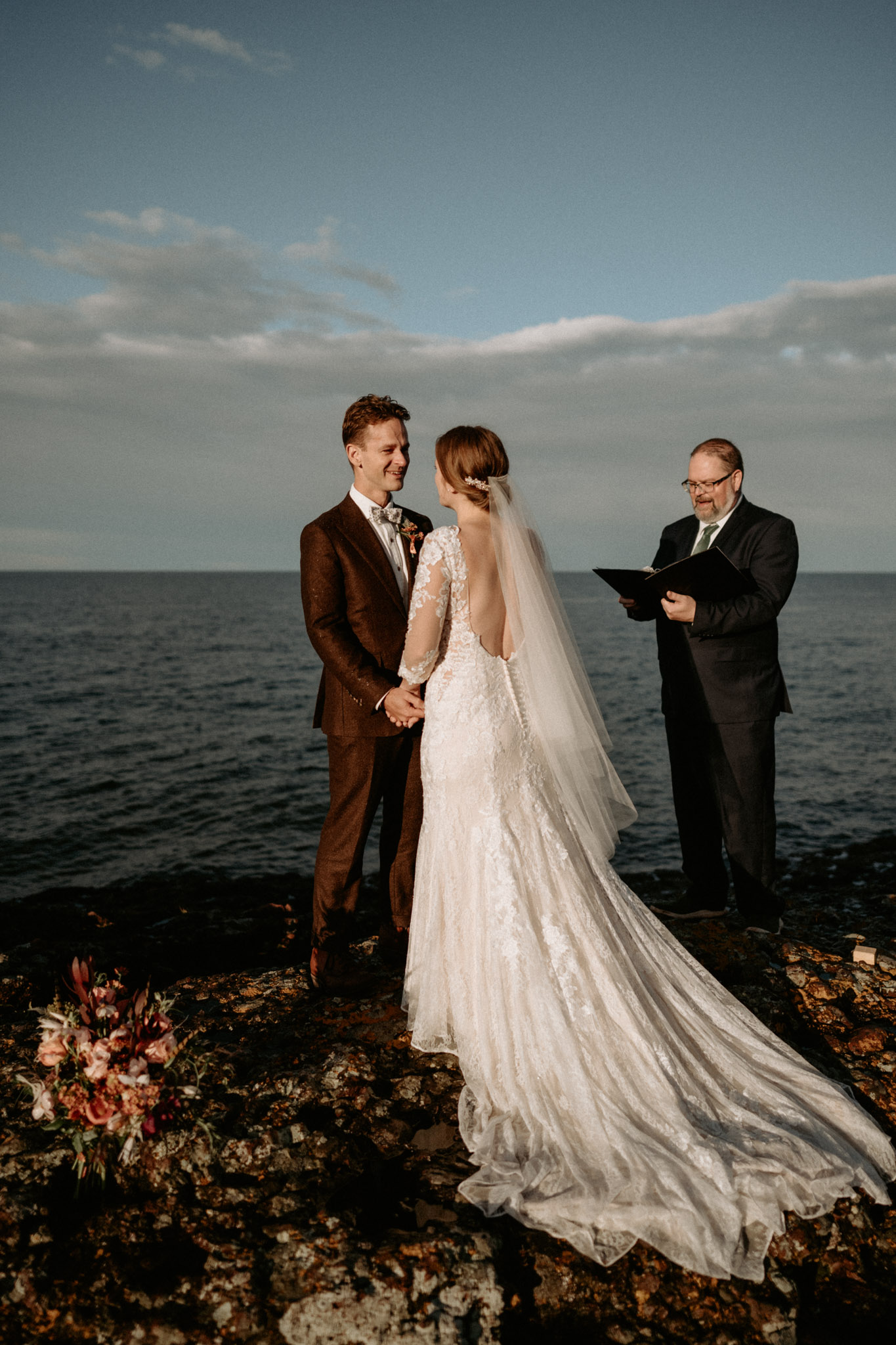
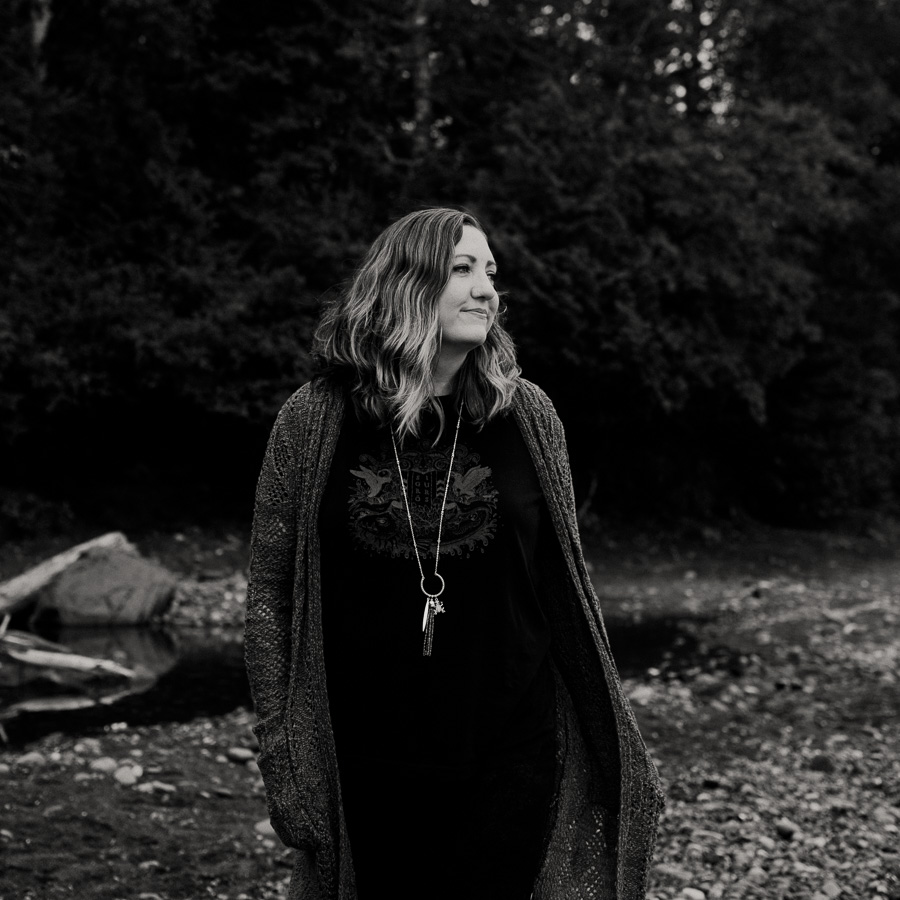
I’m Andrea, a Michigan elopement photographer and planner who’s spent years exploring this incredible state, helping couples create wedding experiences in nature that are personal, meaningful, and stress-free. I’m obsessed with turning your elopement dreams into reality while making sure the experience feels deeply personal, easy-going, and full of magical moments.
If you’re looking for someone to help you plan an intentional, breathtaking elopement, and photograph it in a way that captures not just how it looked, but how it *felt*- you’re in the right place.
Explore More Michigan Elopement Resources
And as someone who lives here in the Upper Peninsula and photographs elopements all over the state, I can promise you this: Michigan is packed with breathtaking places that feel untouched and deeply personal. No crowded tourist traps. Just wild beauty, quiet moments, and the space to make your elopement truly yours.
I believe your elopement should be more than a photoshoot – it should be an intentional experience that reflects who you are. My approach is all about helping you slow down, be present, and connect with each other and nature. Whether it’s scouting hidden waterfalls, crafting a timeline that leaves space for magic, or helping you feel comfortable in front of the camera, I’m here to help you create a day that’s meaningful and unforgettable.
Want to see what’s included when we work together?
Why Elope in Michigan?
Because there’s nowhere else quite like it. From the wild, wave-crashed shores of Lake Superior to secret waterfalls tucked deep in mossy forests, Michigan offers a kind of magic that’s perfect for couples craving a wedding day that’s truly their own.
Eloping in Michigan isn’t just about stunning backdrops, it’s about freedom. Freedom to choose your adventure. To hike through towering pines and say your vows on a cliff at sunrise. To explore hidden beaches, dance under Northern Lights, or simply slip away together for a quiet lakeside ceremony.
Eloping in Michigan can be incredibly affordable compared to big traditional weddings. Permits are often simple, and with the right guidance, you can legally elope just about anywhere: state parks, waterfalls, scenic overlooks, or even quirky local landmarks.
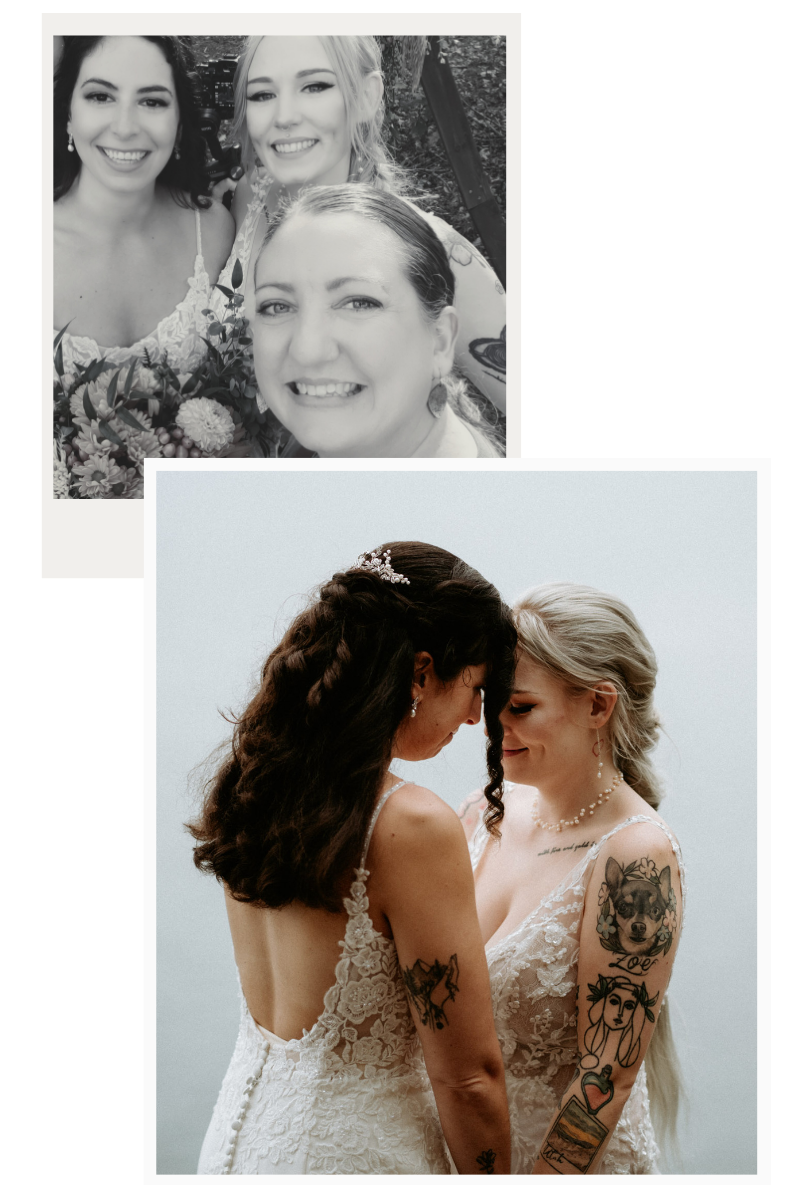

Marriage License & Permits: Michigan Elopement Legal Tips
Ready to dive in and start planning your Michigan elopement adventure? Before you start planning epic cliffs and waterfalls, let’s quickly talk about the legal side of things.
Getting legally married in Michigan is actually pretty simple, but there are a few key things to know:
- You’ll need a Michigan marriage license.
- There’s a 3-day waiting period after applying.
- You’ll need an officiant and two witnesses.
- Some spots, like state parks or national lakeshores, require a special permit.
This is just the quick scoop. If you’re ready to dive into all the nitty-gritty details:
Best Time of Year to Elope in Michigan
One of the most magical things about eloping in Michigan? No two seasons look (or feel) the same. From waterfall rushes in spring to fiery fall color, there’s a perfect time for every couple’s vision. Here’s a quick guide to help you choose the best time of year for your Michigan elopement.
Spring Elopements in Michigan (April – May)
Think roaring waterfalls, fresh green forests, and fewer tourists on the trails. Spring is perfect if you’re craving cooler temps and dramatic water flow for epic photos. Just be prepared for muddy trails and unpredictable weather swings- could be sunshine one minute, snow flurries the next!
Summer Elopements in Michigan (June – August)
This is prime season for warm weather, longer days, and lush green landscapes. Perfect for beach elopements, boat rides, or hiking to remote spots. But keep in mind that crowds can swell at popular destinations. (I’ve got secret spots that usually stay quieter and more private, even in peak season!) And mosquitoes and biting insects can be intense if you’re not prepared. In the Upper Peninsula thre’s actually a black fly season – it’s typically around the beginning of June and lasts for a week or two.
The best time to elope in Michigan completely depends on your vision. Want rushing waterfalls? Go spring. Fall color magic? September and October. Private winter wonderland vibes, and maybe even the aurora? Winter’s your season.
Fall Elopements in Michigan (September – October)
If you want pure color magic, fall is your time. Michigan explodes with vibrant reds, oranges, and golds, especially in the Upper Peninsula. Temperatures are crisp but comfortable, bugs have disappeared, and crowds thin out after Labor Day.
Fall dates can book up quickly – with vendors, lodging and permits – so plan early!
Winter Elopements in Michigan (November – March)
Think sparkling snow, frozen waterfalls, and cozy lodge vibes. Winter elopements in Michigan are absolutely breathtaking and often super private. Just keep in mind that some roads and trails close for the season, and temperatures can be icy and cold, especially in the Upper Peninsula. But winter also brings something truly magical: the chance to witness the Northern Lights dancing across the sky. If you’re dreaming of an aurora backdrop for your vows and a day wrapped in snowy wonder, winter might be your perfect season.
TL;DR:
The best time to elope in Michigan completely depends on your vision. Want rushing waterfalls? Go spring. Fall color magic? October. Cozy private winter wonderland vibes, and maybe even the aurora? Winter’s your season.
Ready to see some of Michigan’s most epic elopement spots? Keep reading to explore locations next…
Where to Elope in Michigan
From wave-crashed cliffs to mossy forests, Michigan is packed with incredible places to say your vows. The best part? You can find a spot that feels completely your own – no matter if you’re dreaming of epic Lake Superior views, quiet forest trails, or hidden waterfalls.
Here’s a taste of some of the best places to elope in Michigan:


The Keweenaw Peninsula
This wild, remote peninsula at the very top of the Upper Peninsula is pure magic for adventurous souls. Think rugged cliffs, moss-covered trails, and endless Lake Superior vistas. Spots like Copper Harbor, Estivant Pines, and Horseshoe Harbor offer breathtaking backdrops and a sense of total escape. Check out my Keweenaw Peninsula Elopement Guide →
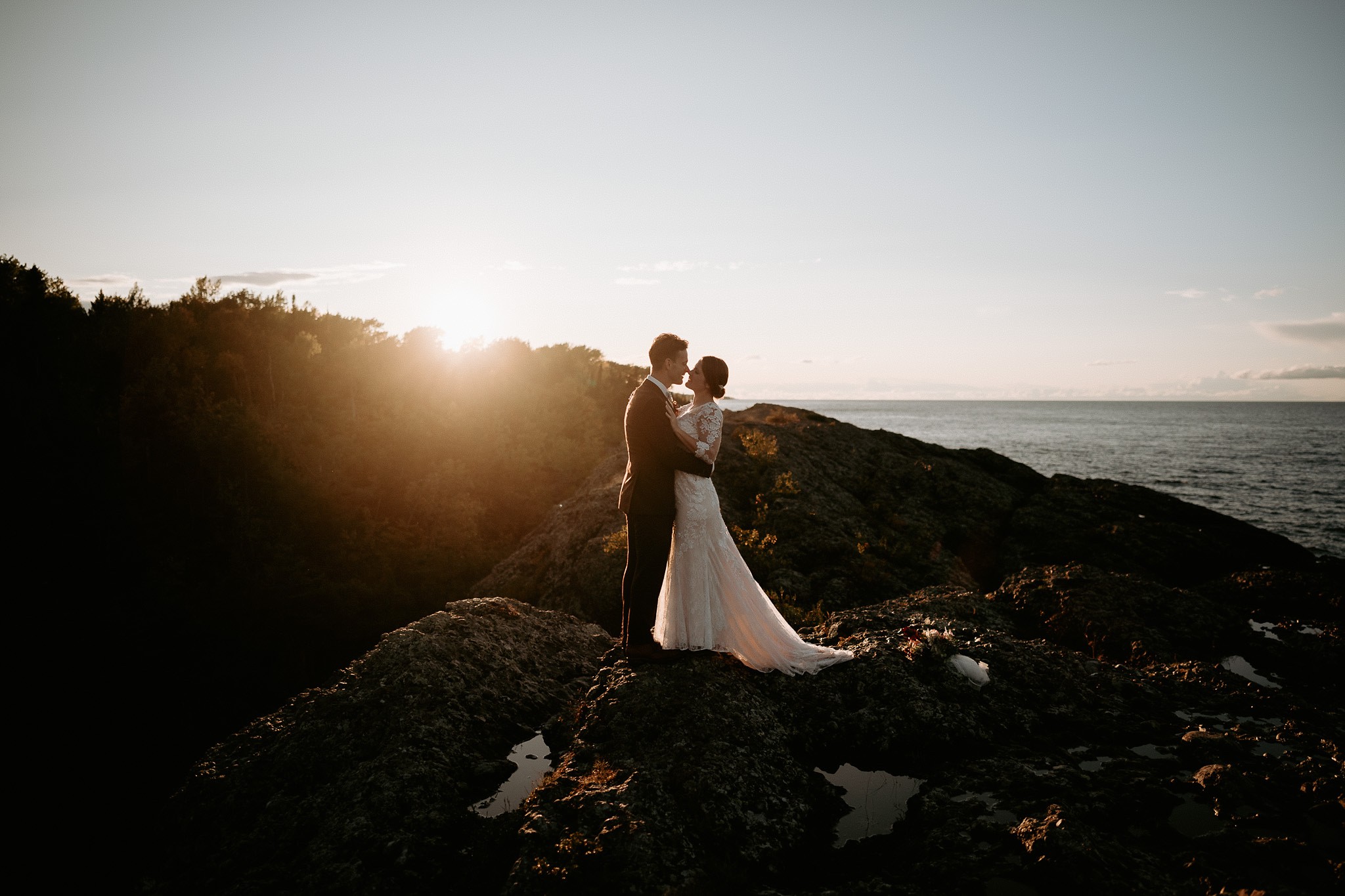
Copper Harbor
Tucked at the tip of Michigan, Copper Harbor is like a little secret world with wild forests, towering bluffs, and some of the most incredible sunsets you’ll ever see. Whether you’re hiking Brockway Mountain or exploring hidden shoreline trails, it’s perfect for couples wanting a remote adventure. Check out these Copper Harbor Elopement Stories →
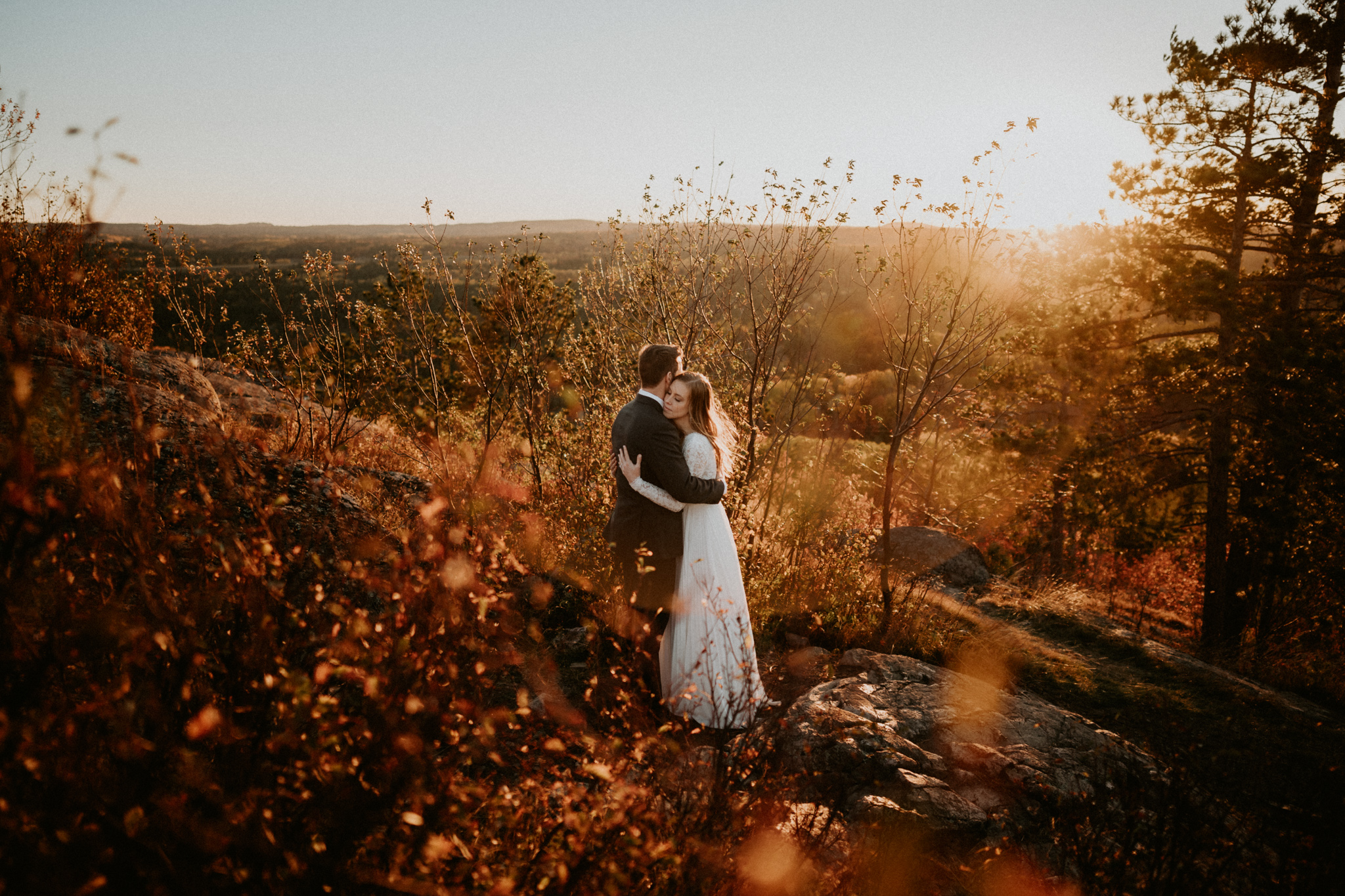
Marquette Area
Marquette is an absolute gem for elopements, with dramatic prehistoric lava landscapes like Black Rocks, stunning summits like Sugarloaf Mountain & Hogback Mountain, massive waterfalls like Dead River Falls, and easy access to the Lake Superior shoreline. It’s perfect for couples who want wild beauty while still staying close to a charming small town vibe. Explore eloping in Marquette →

Porcupine Mountains Wilderness State Park
If you’re dreaming of a rugged, untamed elopement surrounded by towering forests and scenic vistas, the Porcupine Mountains are your place. With Lake of the Clouds, breathtaking overlooks, and secluded waterfalls, it’s pure Upper Peninsula magic. Learn more about the Porcupine Mountains for elopements →
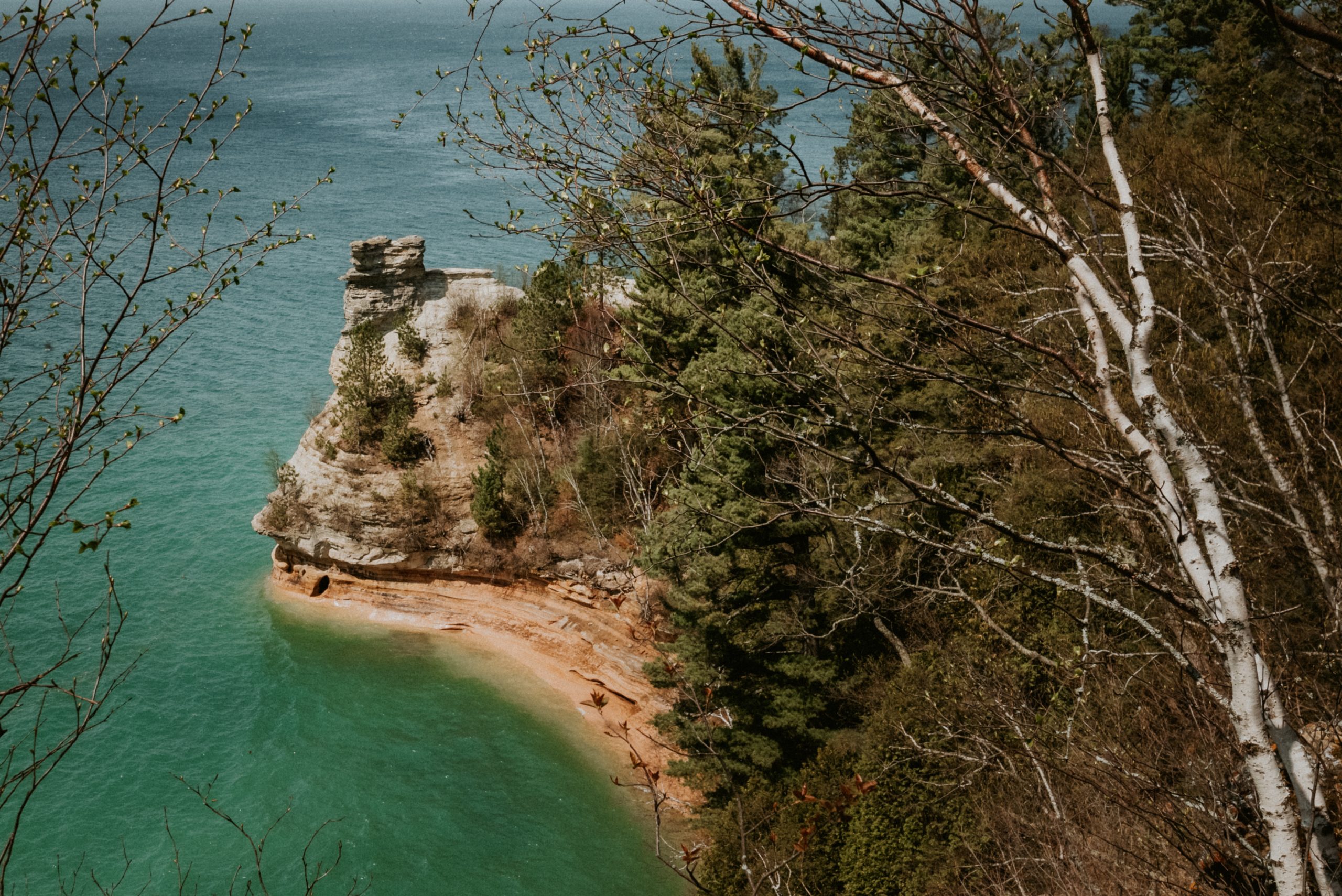
Pictured Rocks National Lakeshore
Known for towering sandstone cliffs, vibrant turquoise waters, and hidden waterfalls, Pictured Rocks is one of Michigan’s most iconic elopement spots. It’s jaw-droppingly beautiful, but also popular, so timing and permits are key. Dive into my Pictured Rocks elopement guide →
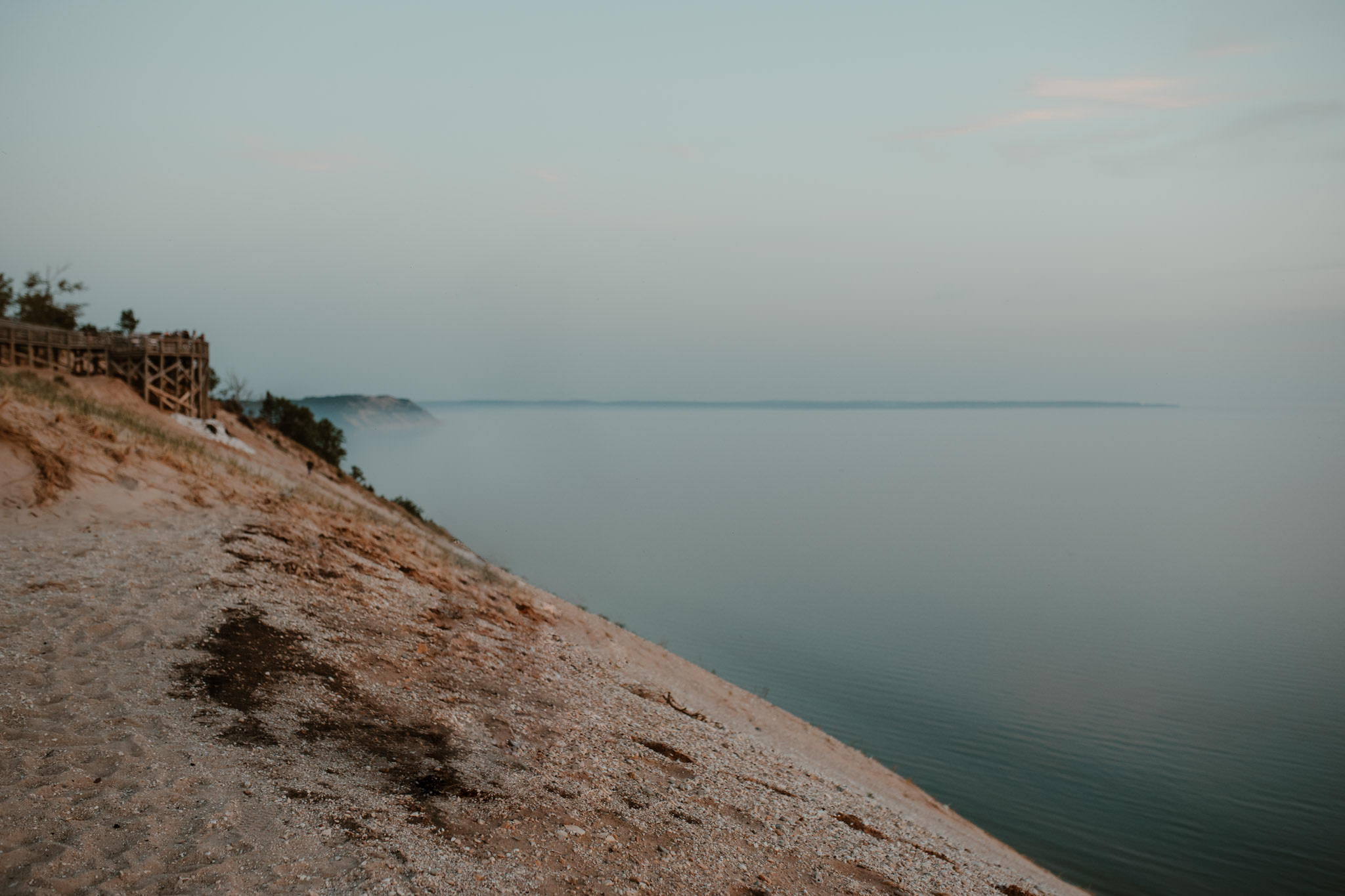

Best Elopement Locations All Across Michigan
Michigan is full of stunning places for an intimate elopement beyond the Upper Peninsula. If you’re dreaming of a ceremony surrounded by timeless charm, Mackinac Island offers horse-drawn carriages, Victorian architecture, and gorgeous lake views without a single car in sight. Downstate, Sleeping Bear Dunes is pure magic for couples wanting endless sand dunes, sweeping overlooks of Lake Michigan, and sunset ceremonies that feel like the edge of the world.
For unique city vibes blended with nature, Detroit’s Belle Isle Park is an incredible spot for a unique elopement, featuring historic structures like the oldest aquarium in the US & the picturesque Anna Scripps Whitcomb Conservatory, and skyline backdrops that add a modern twist.
To me, choosing a location isn’t just about pretty scenery: it’s about finding a spot that connects with your story, your energy, and how you want your day to feel. From the rugged cliffs of the UP to the rolling dunes of the Lower Peninsula, I’m here to help you find the perfect place for a day that’s as wild or peaceful as you want it to be.
Want to learn more about how I help couples discover the perfect Michigan elopement locations and plan their dream elopement?
How Much Does It Cost to Elope in Michigan?
So… how much does it cost to elope in Michigan?
Here’s the magic of choosing an elopement over a traditional wedding: you have total flexibility. You can keep things beautifully simple, or craft an unforgettable adventure filled with unique experiences.
On average, couples spend anywhere from $3,000 to $15,000 on a Michigan elopement, depending on how elaborate or low-key they want their day to be. Factors like travel, permits for certain locations, photography hours, and extra touches (like florals, videography, or multi-day adventures) all play a role.
My Michigan elopement packages are designed to take the stress off your plate and help you fully soak in the magic of your day. Every package includes:
- Personalized elopement planning support
- Location recommendations tailored to your vibe
- Permit guidance
- Flexible timeline creation
- A relaxed photography experience and amazing photos
- An online gallery with high-resolution downloads & full rights to your photos
- Bonus magic!
For couples dreaming of truly stress-free, epic wedding adventures, I also offer All-Inclusive Elopement Experiences that can include hiking, local cuisine, multiple locations, or even rock hunting or Northern Lights chasing!
If you’re wondering how much your unique elopement vision might cost (or what’s possible) I’d love to help you figure it out. Check out my Michigan elopement pricing and packages here.
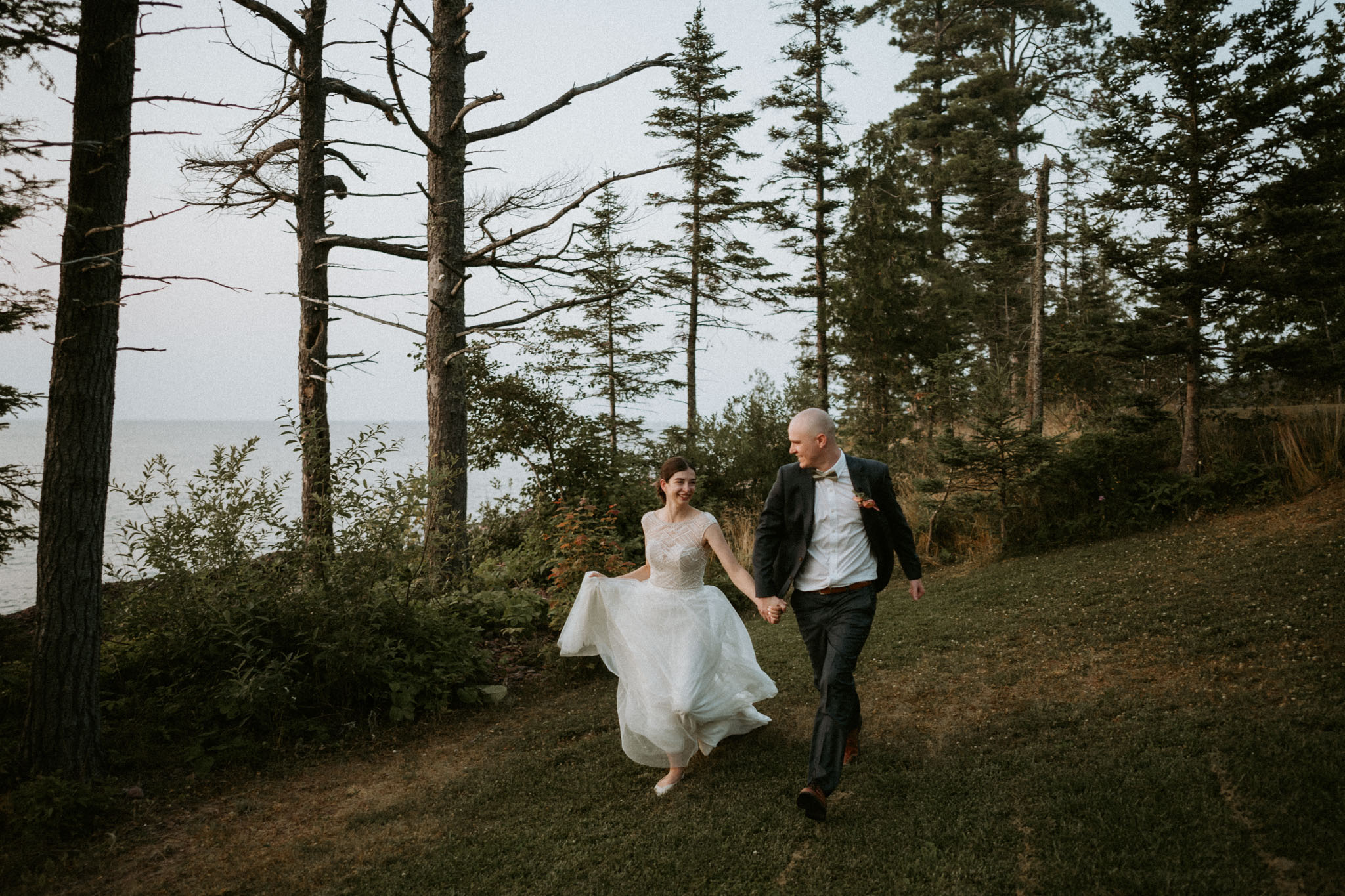
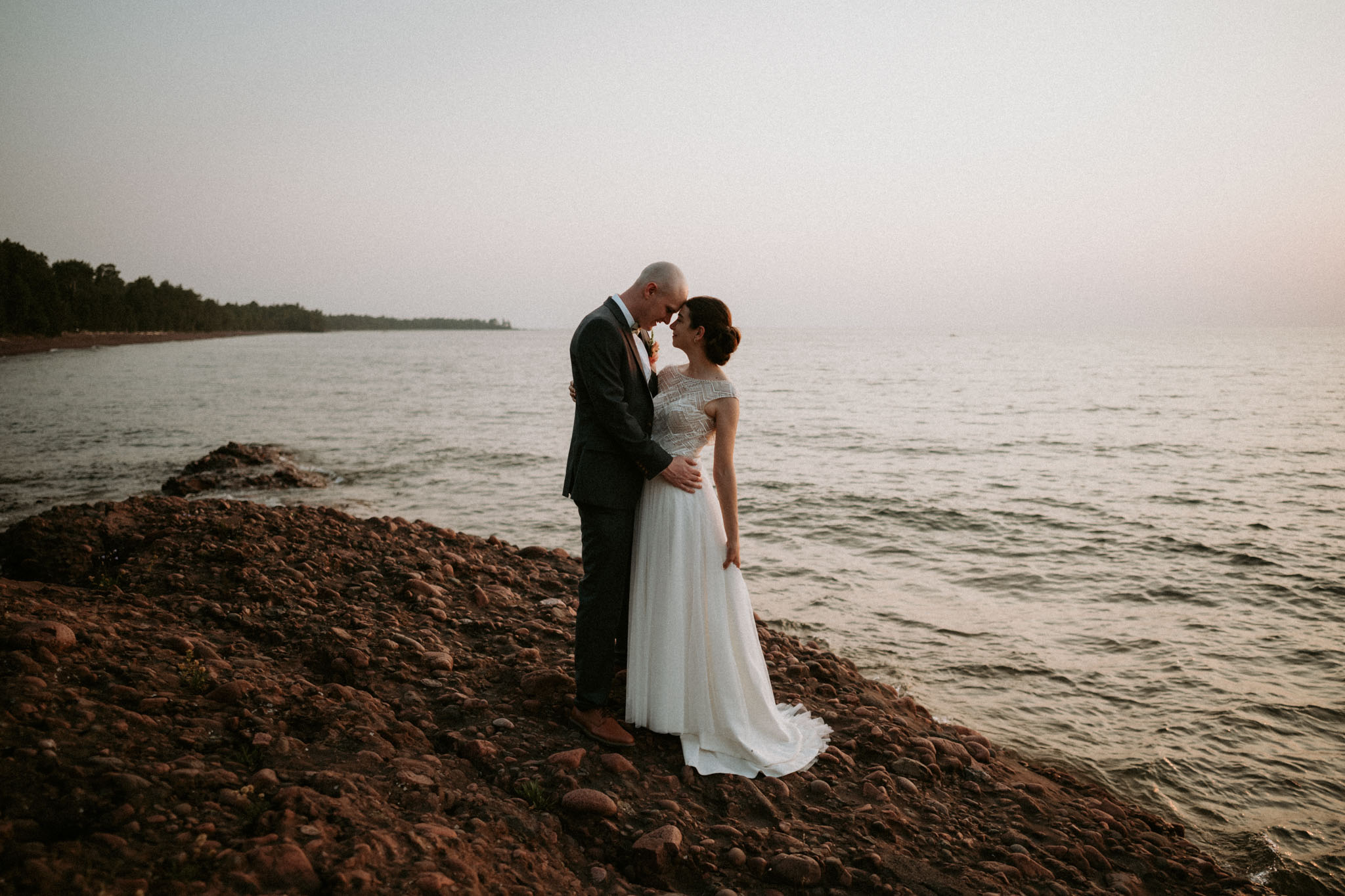
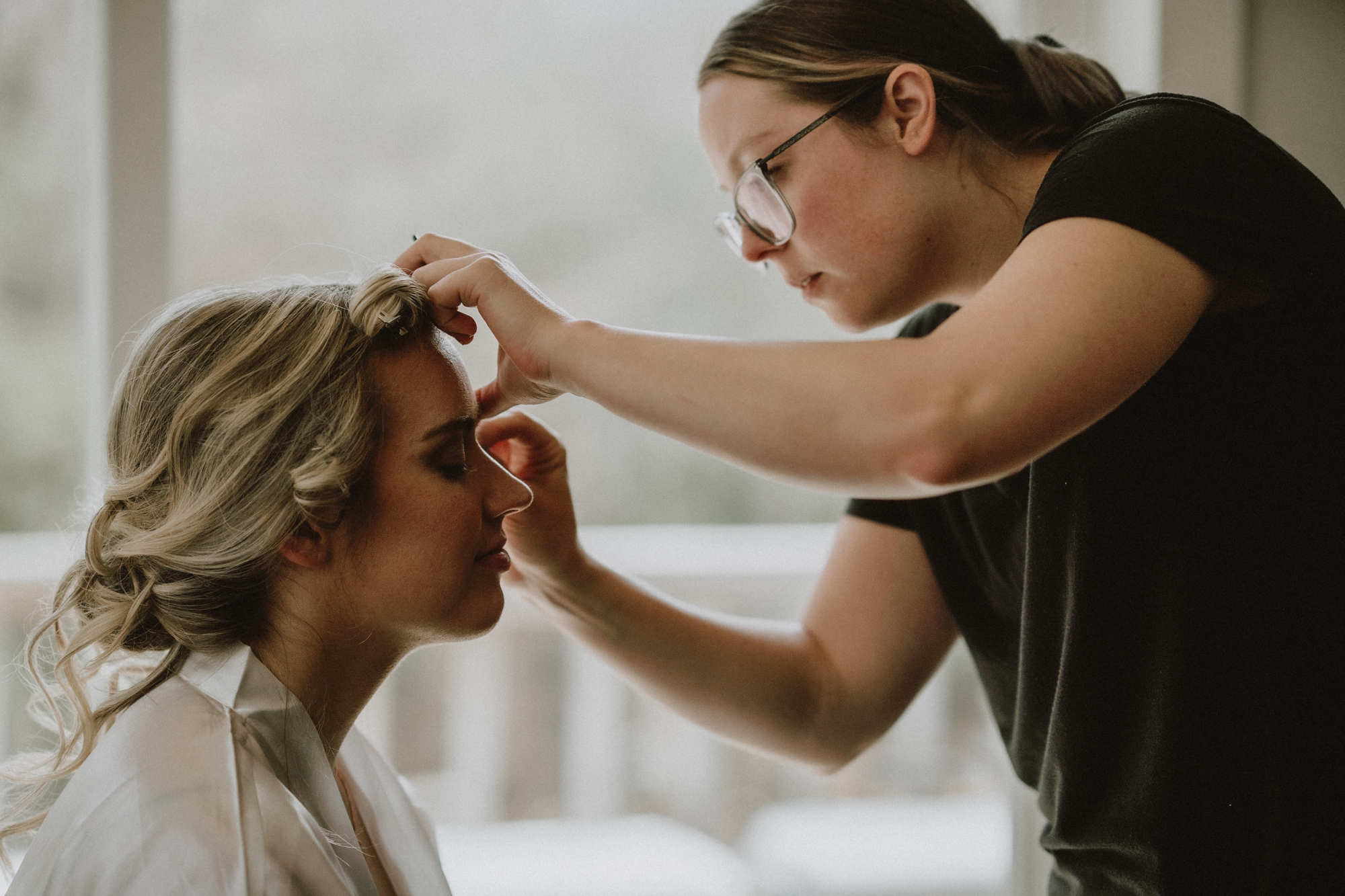
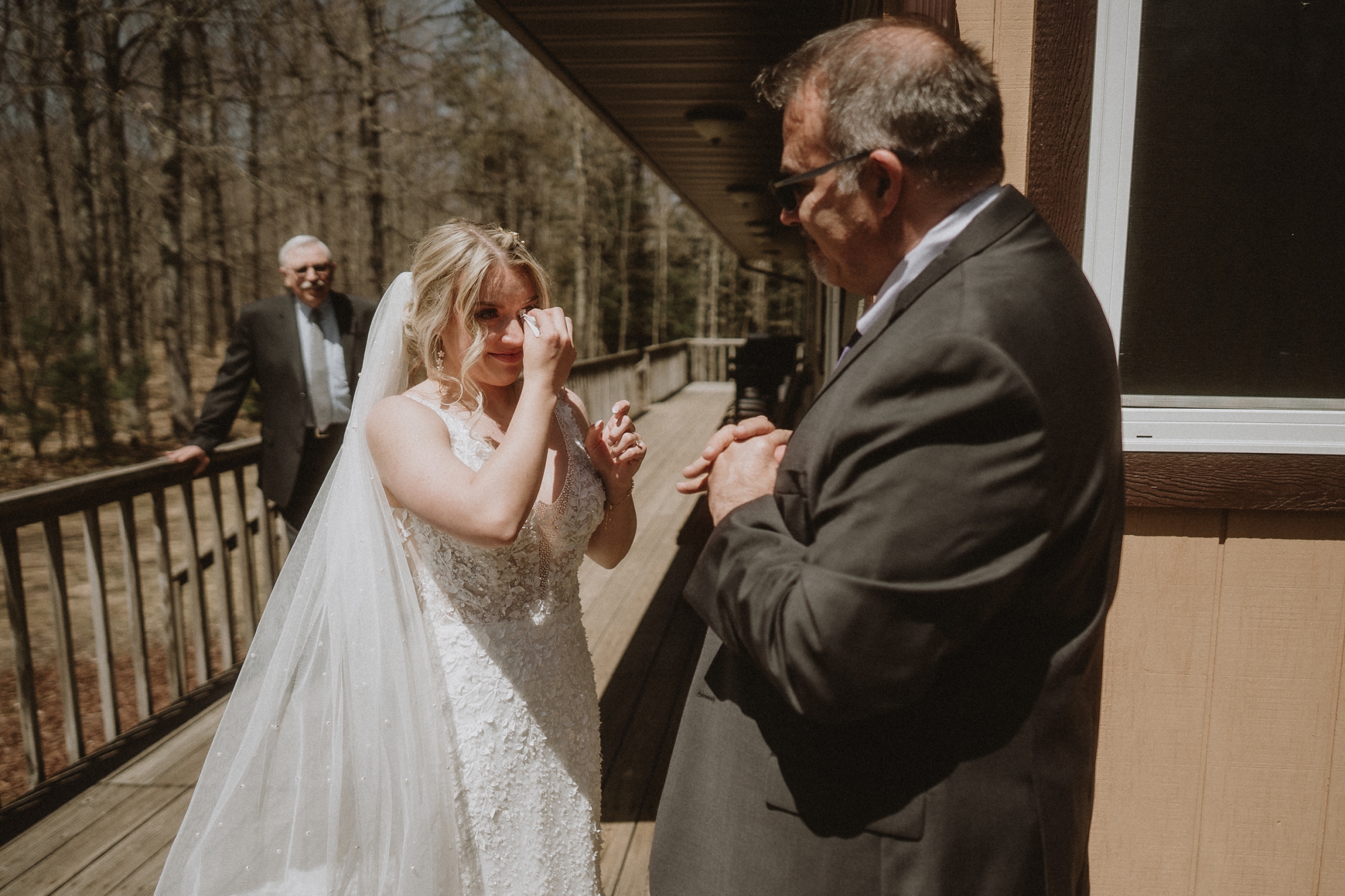
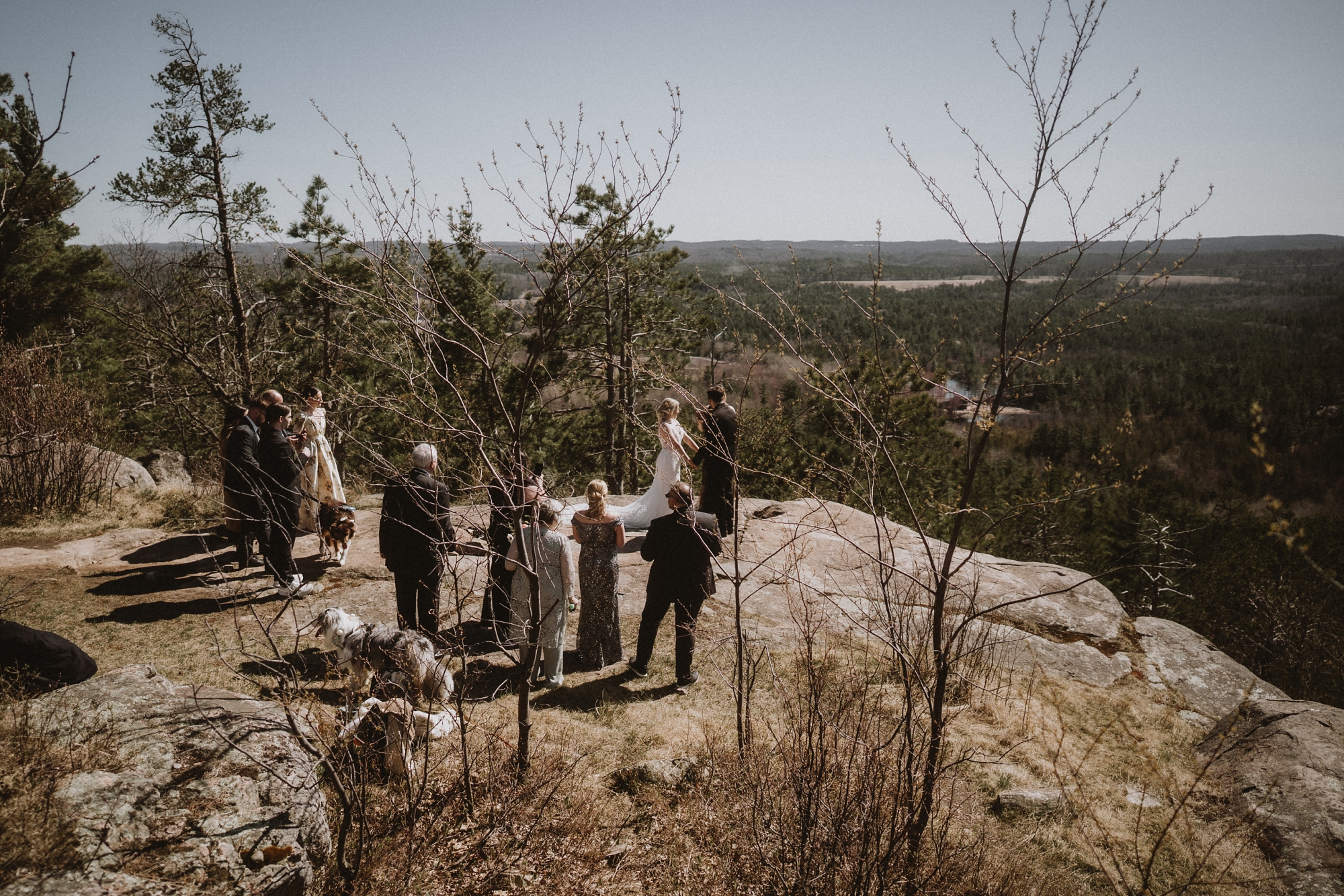
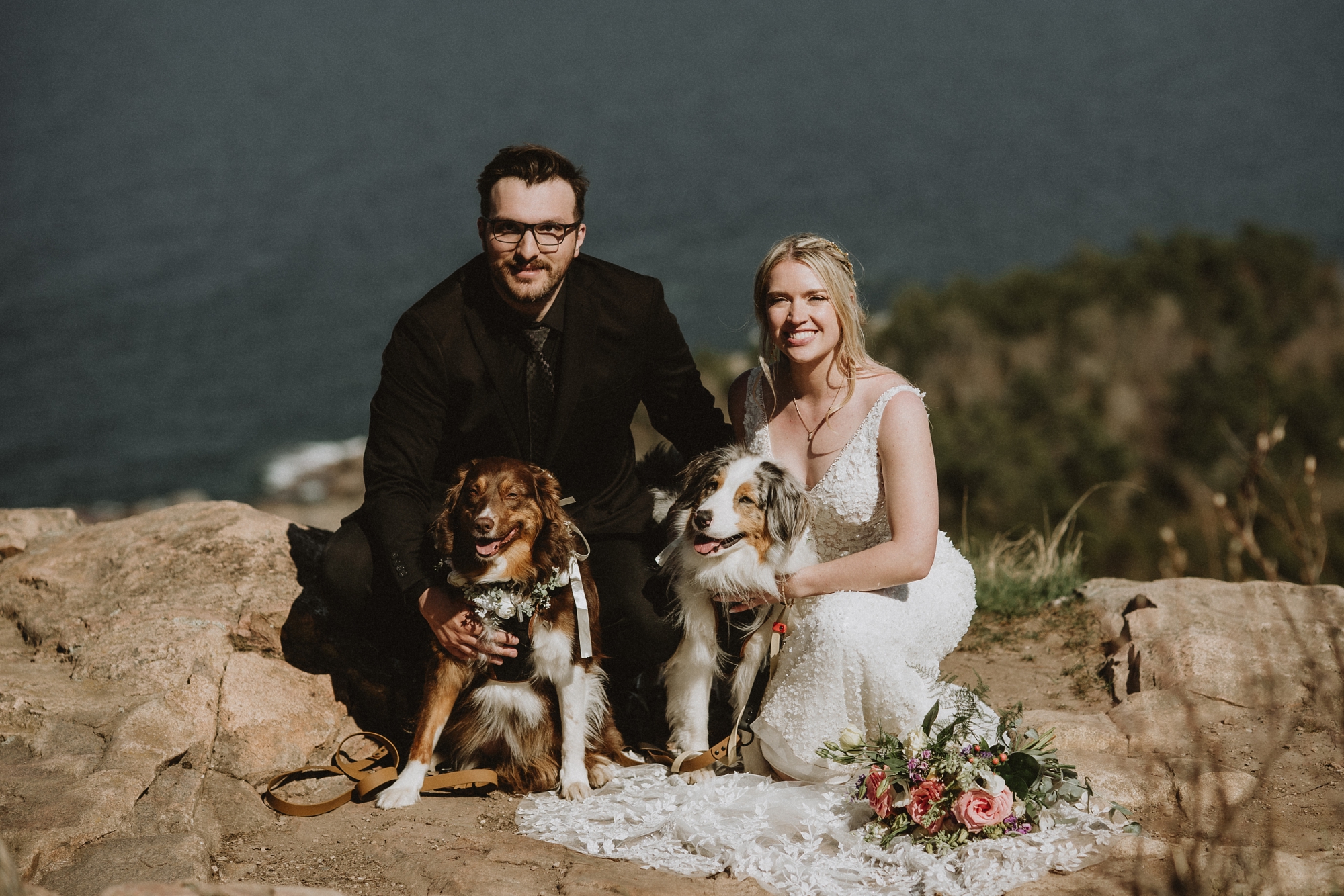
How to Plan Your Michigan Elopement
A Michigan elopement might sound refreshingly simple, but even an intimate wedding day comes with decisions to make. Where should you go? What time of year is best? Are there permits to think about? How can you make the day feel completely your own? Should you invite guests?
Planning your Michigan elopement is more than just picking a gorgeous spot, it’s about creating a day that feels like the two of you. Even intimate celebrations deserve thoughtful planning. Here are some key things to keep in mind:
→ Start With Your Vision
Decide how you want your day to feel: adventurous, cozy & relaxed, playful, or all of the above. Your vibe shapes every other choice you make.
→ Consider Guests (or Not!)
Elopements can include a handful of loved ones, or none at all. Knowing your guest count early affects locations, permits, and the overall experience.
→ Build a Flexible Timeline
Plan for travel time, best light for photos, and quiet moments. A flexible timeline keeps the day relaxed instead of rushed.
→ Know the Logistics
Think about permits, seasonal access, and Michigan’s unpredictable weather. Small details can make a big difference.
→ Make It Personal
Add touches that reflect your story like custom vows, meaningful objects, or activities you love. See ideas for personalizing your Michigan elopement here: Personalize your elopement →
→ Get help from an expert if needed
If you’d love a step-by-step elopement planning roadmap, my FREE Michigan Elopement Field Guide is packed with tips and inspiration → Download The Planning Field Guide
Helpful Links for Planning Your Michigan Elopement
Everything you need to know about marriage licenses, permits, and legal steps for your Michigan elopement.
A permit application must be submitted for any ceremonies or events taking place on state land or water, including state parks.
Planning to elope at Pictured Rocks? Here’s the official page for special use permits and rules.
Explore more about Michigan’s regions, hidden gems, and travel ideas to inspire your elopement adventure.
Local info for the Keweenaw Peninsula, perfect for couples considering the Upper Peninsula for their elopement.
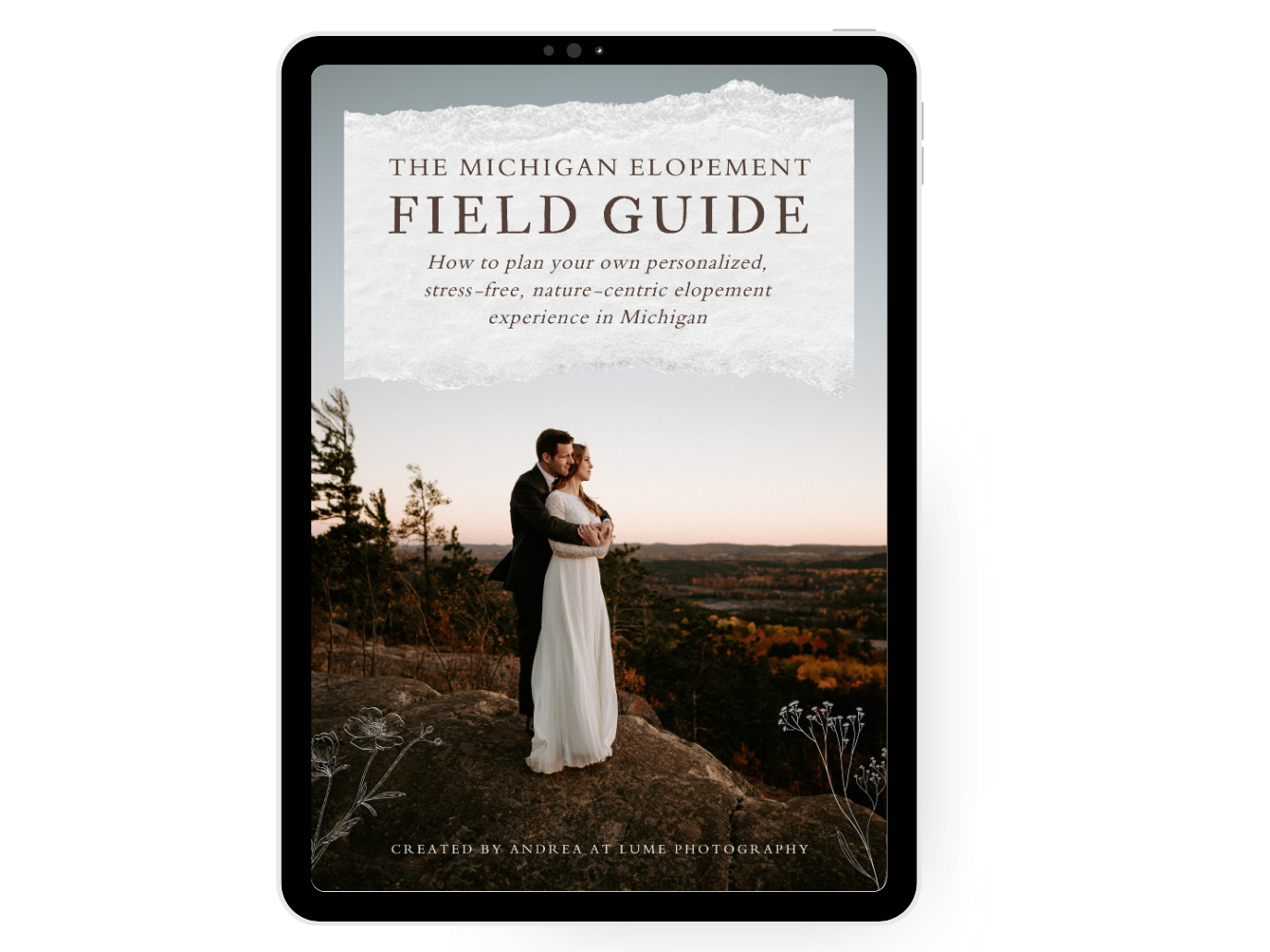
Want the best step-by-step guide to planning your own elopement in Michigan?
Then grab my FREE field guide!
Get instant access (no spam, I promise!)

Featured Guides & Inspiration
Looking for more help planning your Michigan elopement?
I’ve put together tons of resources to make your journey easier, more fun, and way less stressful. Check out some of my top picks below, or dive into my full library of tips and inspiration.
How to Personalize Your Michigan Elopement
One of the best things about choosing an elopement is that you can toss out all the rules and create a day that’s completely yours. Michigan offers the perfect canvas for a wedding day that reflects who you are as a couple, whether that’s adventurous, quiet and soulful, playful, or a mix of everything.
Think about small details that feel meaningful to you both. Maybe it’s writing custom vows you read privately on a hidden lakeshore. Or planning your ceremony for sunrise, so the first light of the day shines on your vows. You might bring along items that matter to your story: a quilt from your first home together, your dog as your ring bearer, or flowers that hold special meaning.
Personalizing your elopement is what transforms it from “just photos in a pretty place” into a day that’s deeply emotional and unforgettable. The possibilities are endless, and they’re one of my favorite parts of helping couples plan.
If you’d love some inspiration for ways to make your Michigan elopement feel truly yours, check out this article I wrote: How To Personalize Your Elopement.


Real Michigan Elopement Stories
Curious what a Michigan elopement with me actually looks like in real life?
Every couple’s story is unique, and that’s one of the things I love most about what I do.
Some couples hike out to a secret waterfall at sunrise. Others say their vows on a rocky cliff as Lake Superior roars below. I’ve photographed intimate ceremonies in the pouring rain, golden hour adventures on sandy dunes, and quiet moments under the Northern Lights. Each elopement has its own magic, shaped by the couple’s personalities, the season, and the incredible landscapes around us.
If you’d love a glimpse into how beautiful (and personal) Michigan elopements can be, check out some of my favorite real stories here:
FAQs About Eloping in Michigan
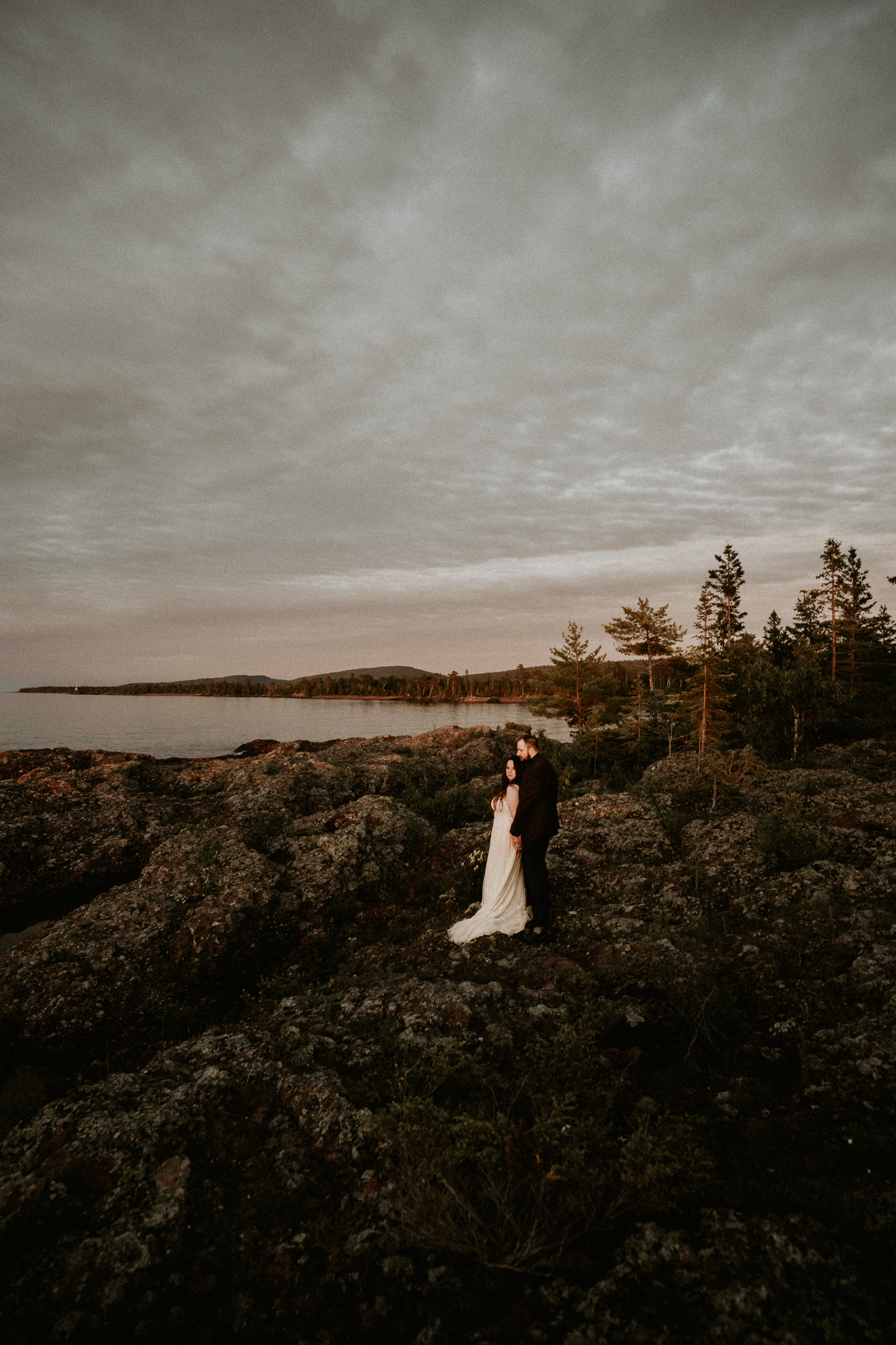
I’m Andrea: Michigan Elopement Photographer & Planning Guide
I believe your wedding day should be more than just a ceremony and photos.
You deserve a wedding experience that’s mindful, intentional, and true to who you are. A day that’s amazing, full of unforgettable memories, and that you look back on years from now with no regrets.
When you work with me, it’s not about stiff poses or checking shots off a list. It’s about slowing down, connecting, soaking in the moments that matter, and honoring your journey together.
Let’s create an elopement that’s as magical and meaningful as your story.
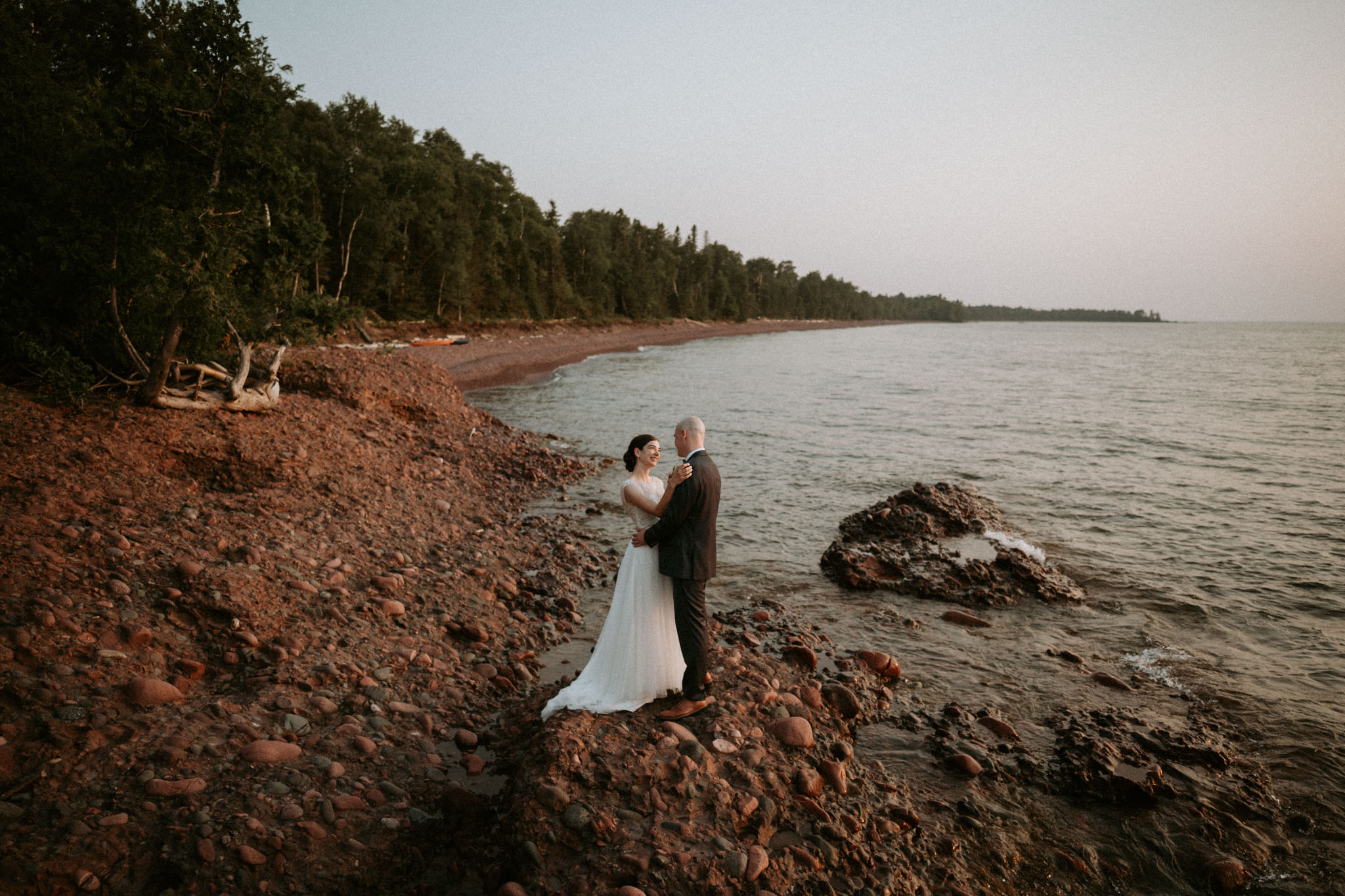
Ready For An Unforgettable Elopement Experience?
If you’re feeling inspired to elope in Michigan (or if your head’s spinning a little from all the possibilities) I’d love to help you craft a day that’s completely yours.
Whether you’re dreaming of a quiet sunrise ceremony, an all-day adventure in the Upper Peninsula, or something totally outside the box, I’m here to help make it amazing, intentional, and stress-free.

